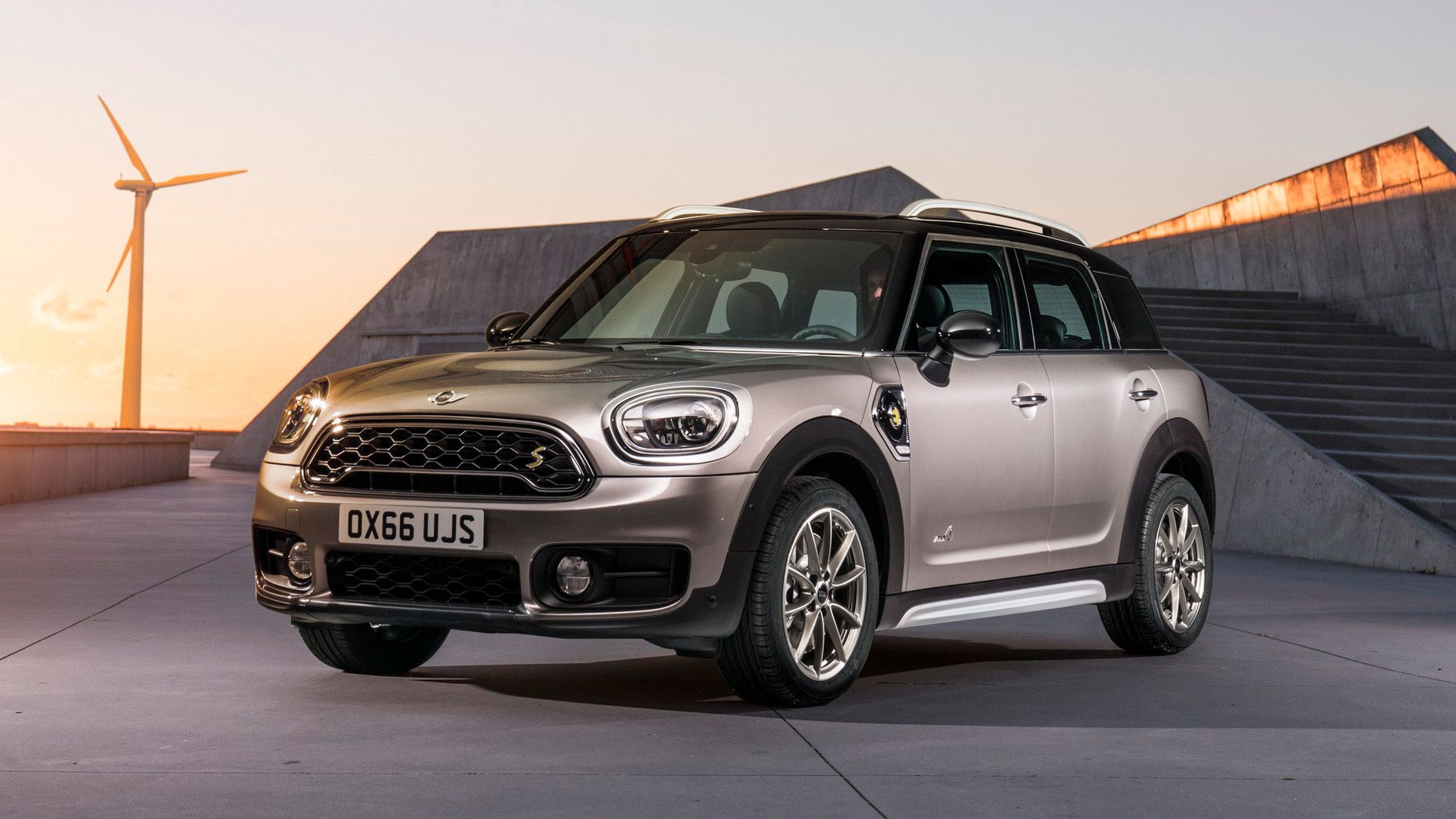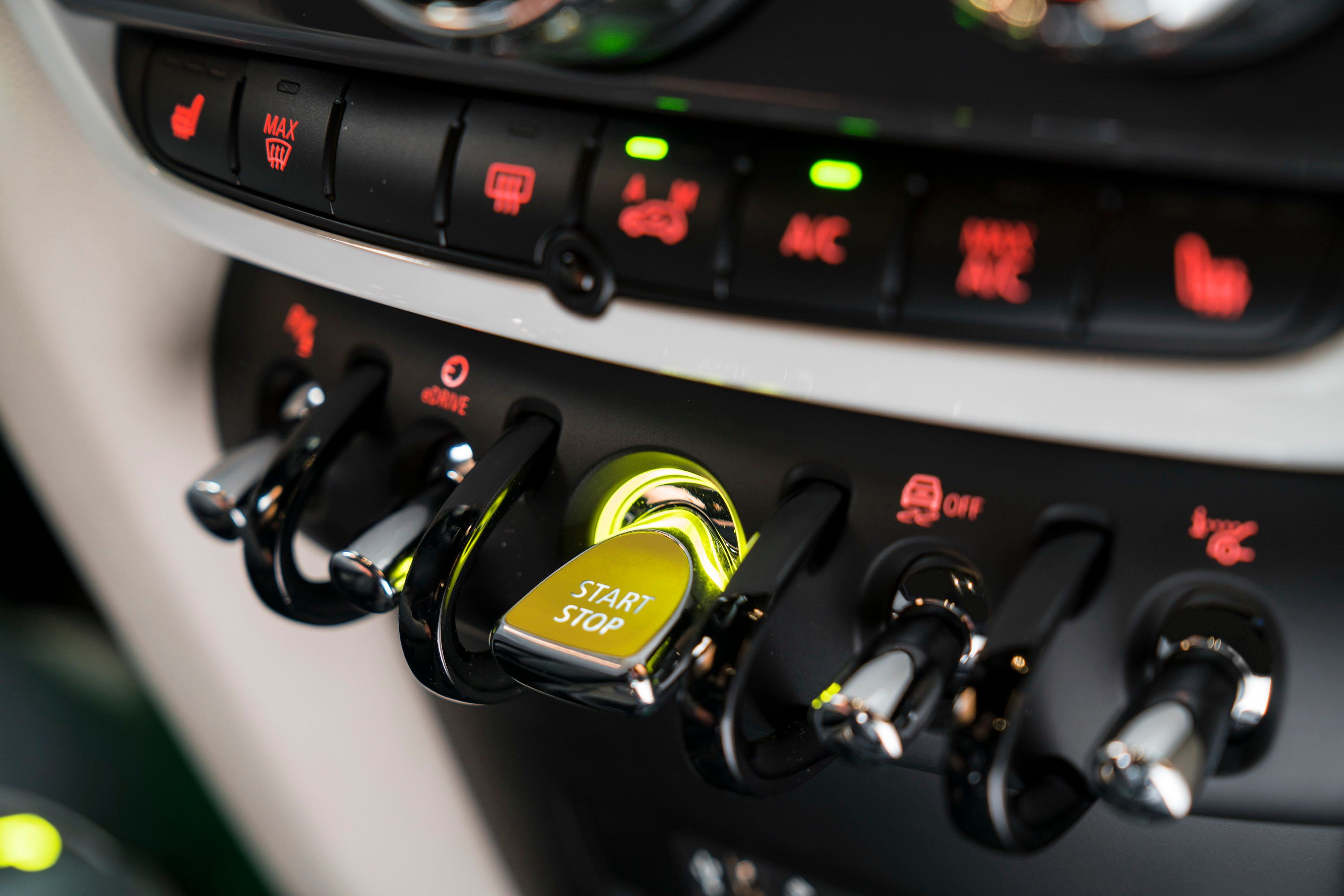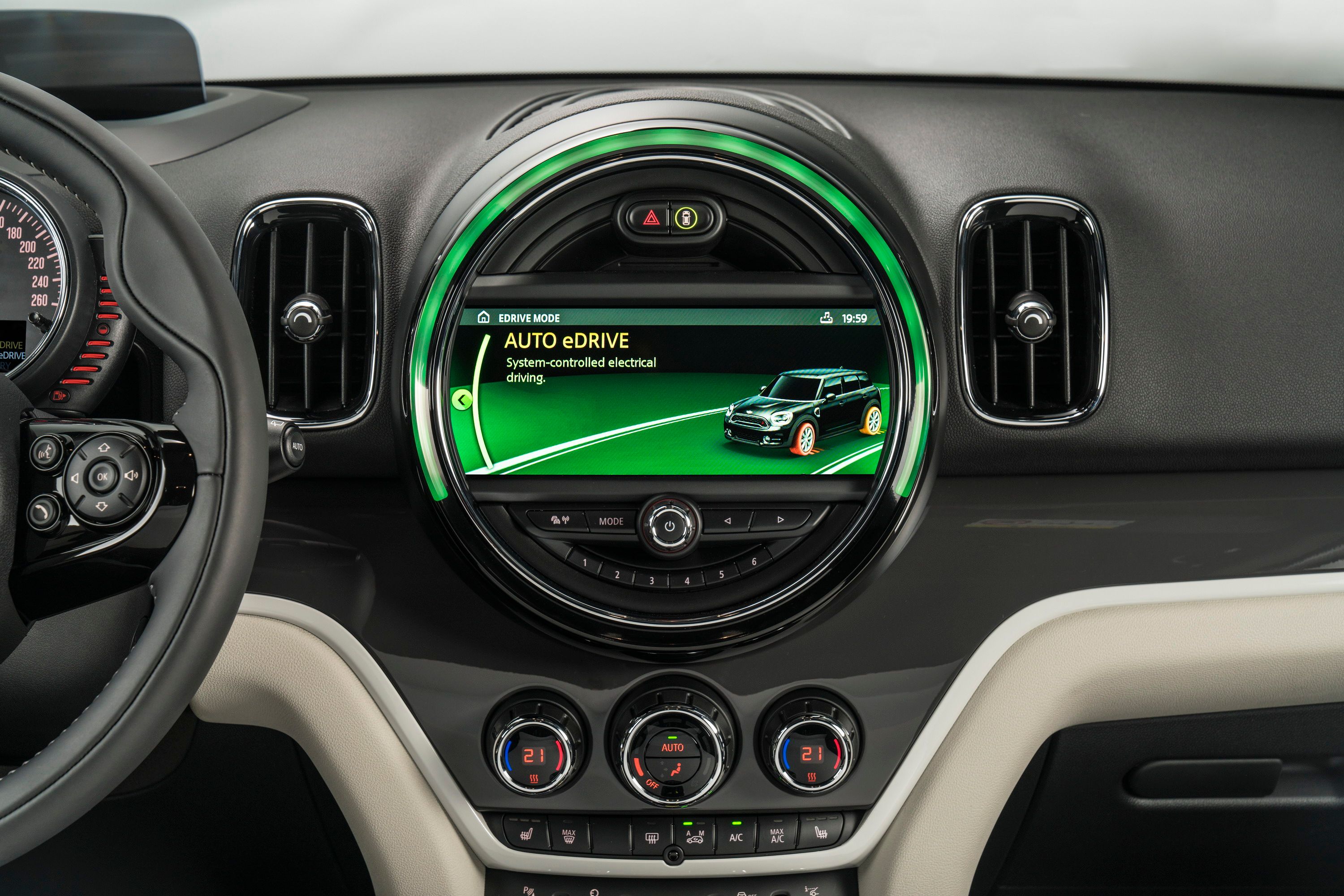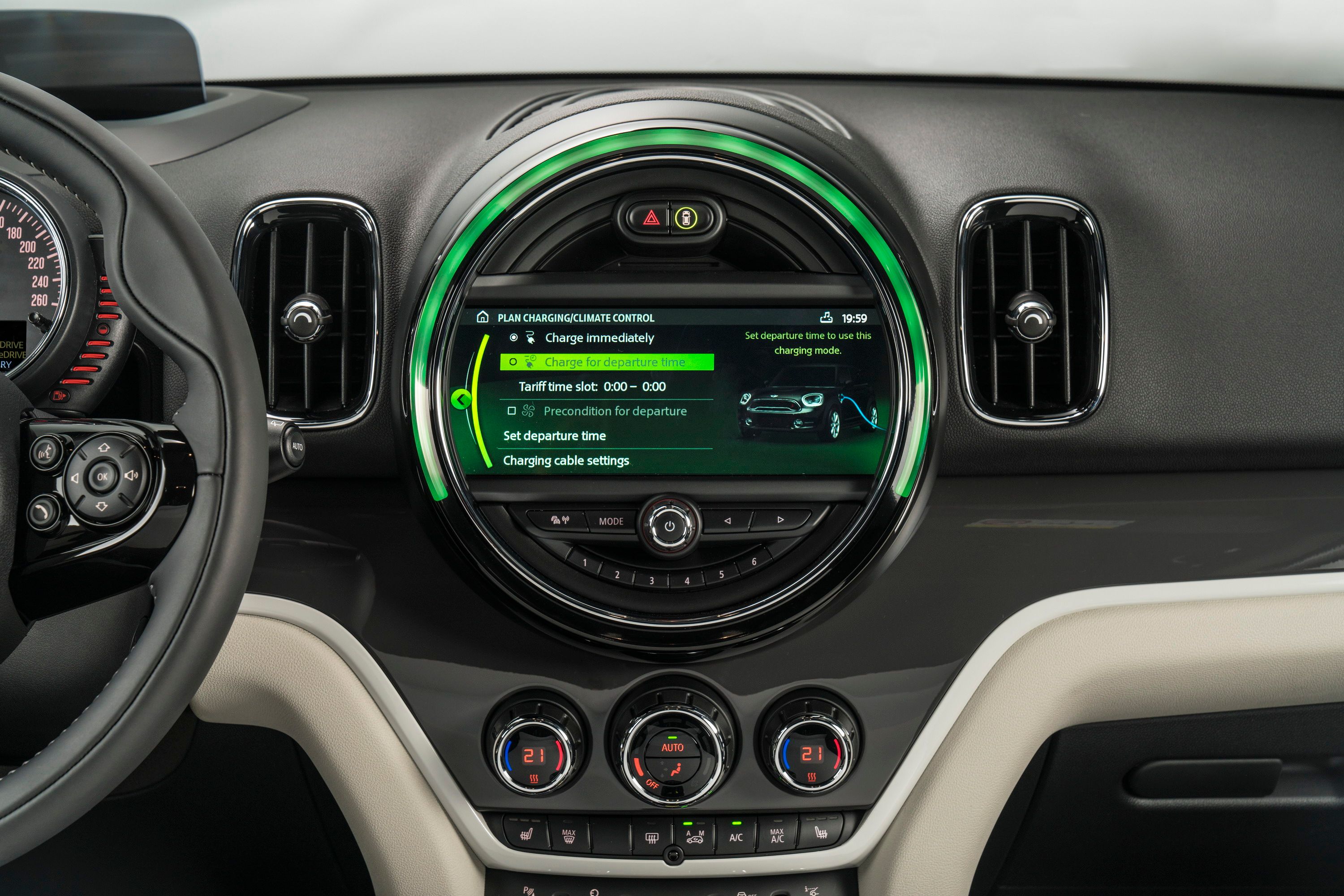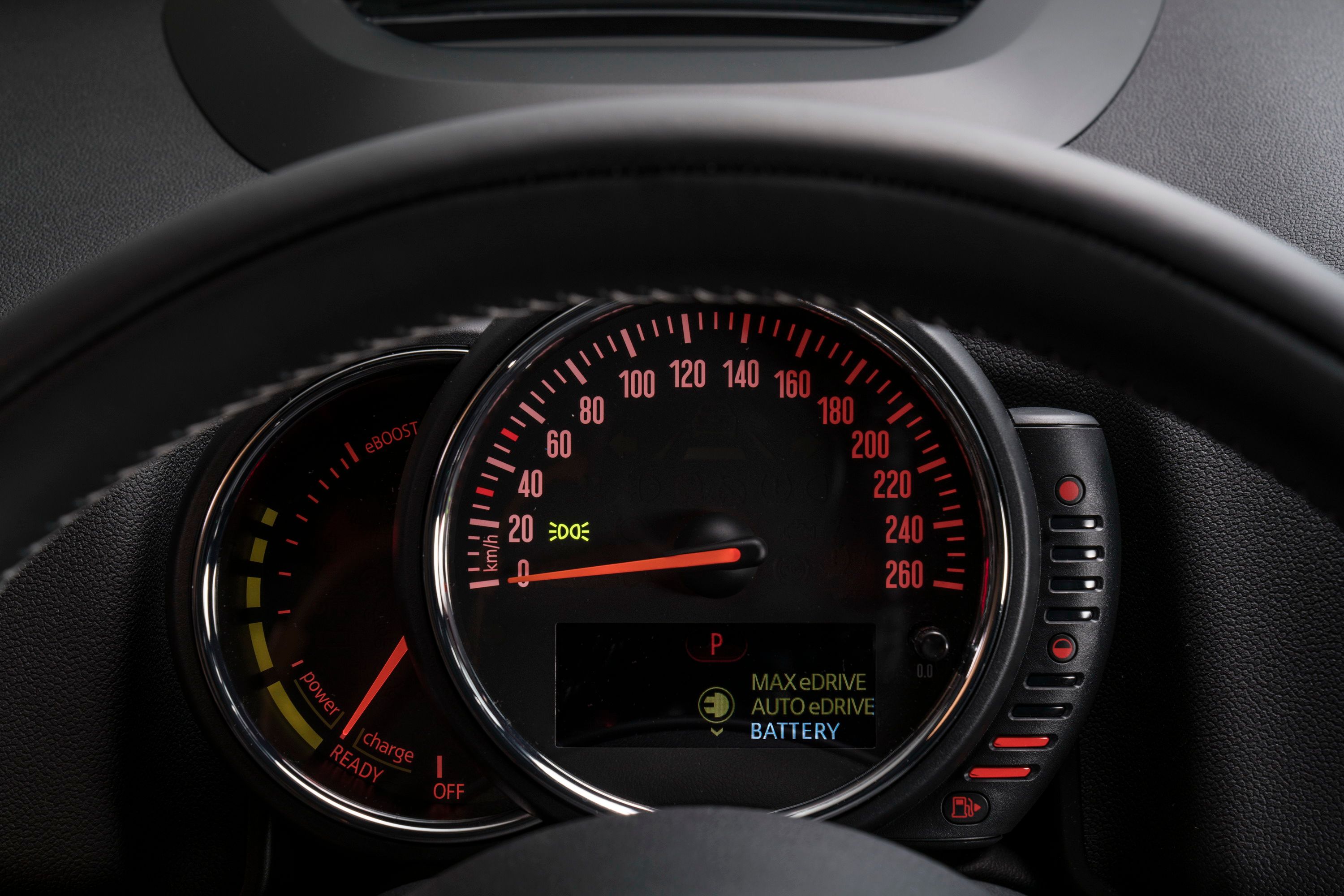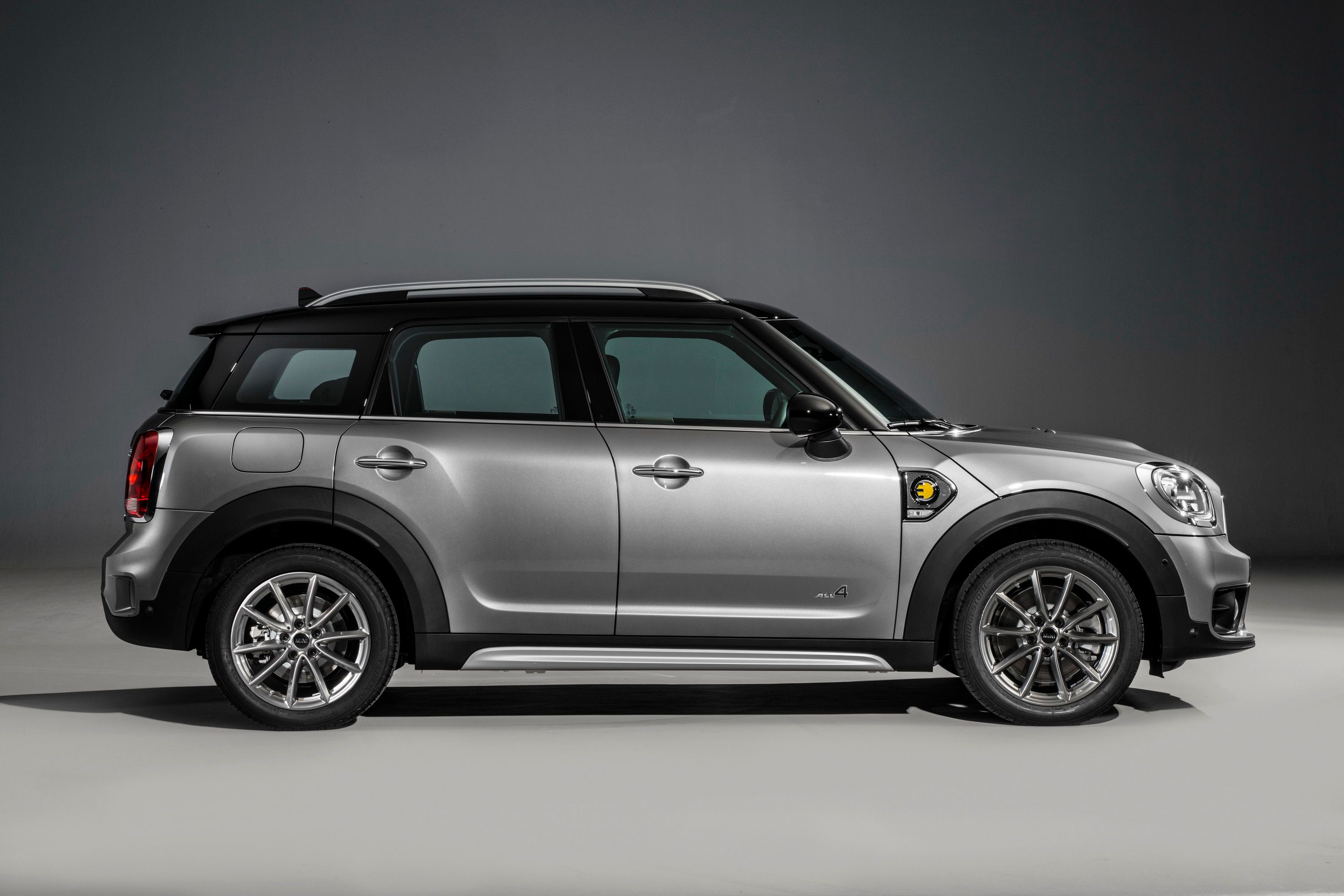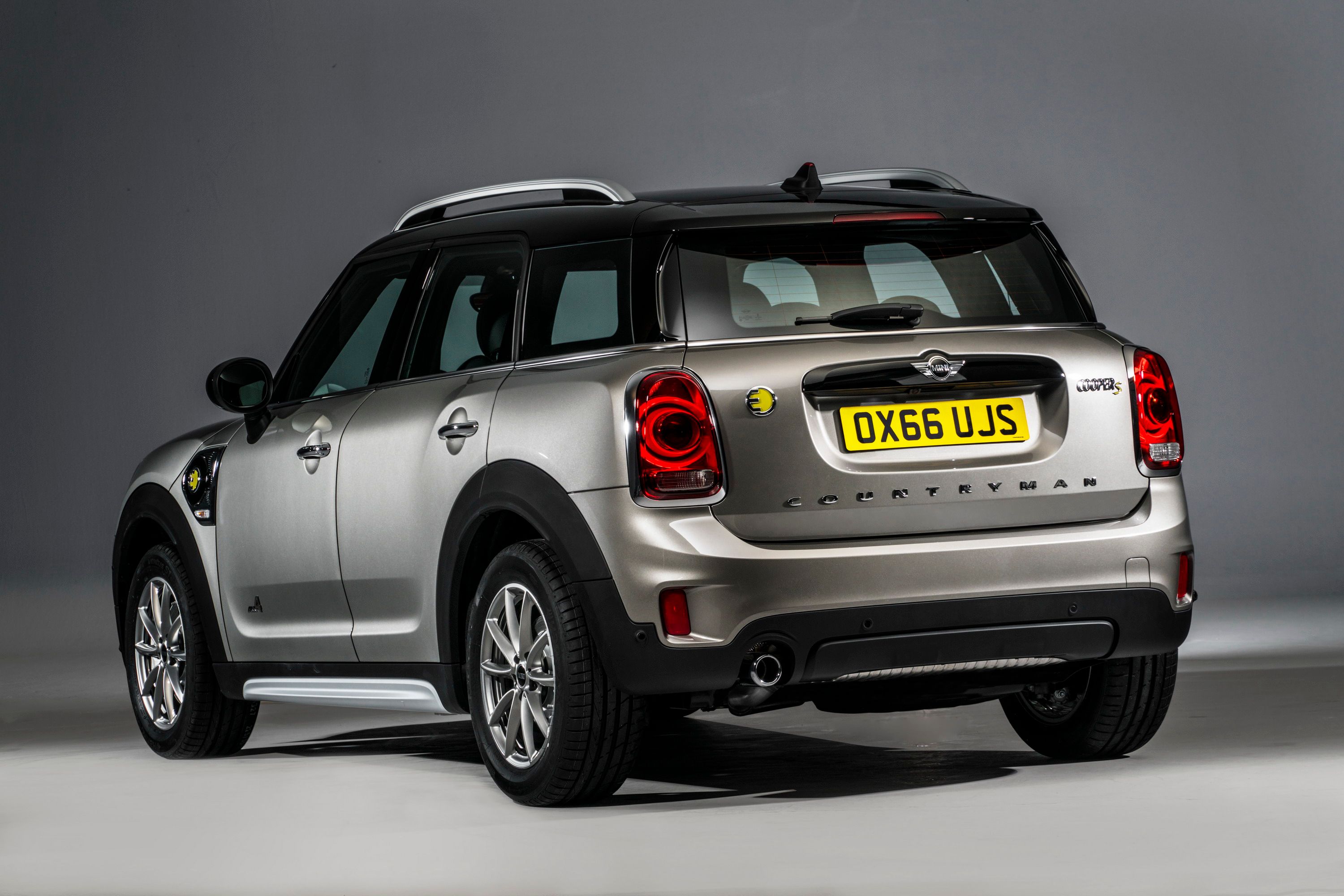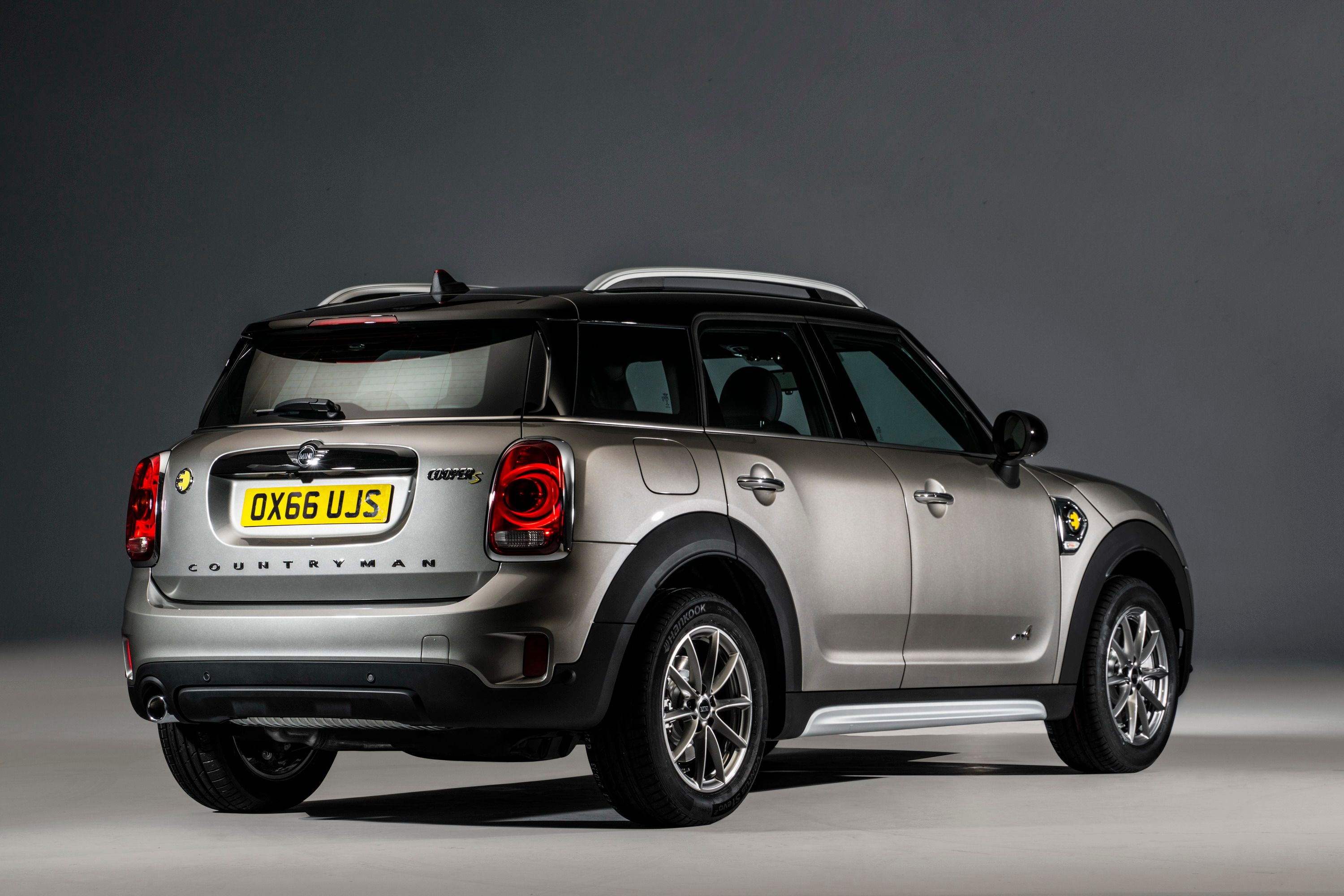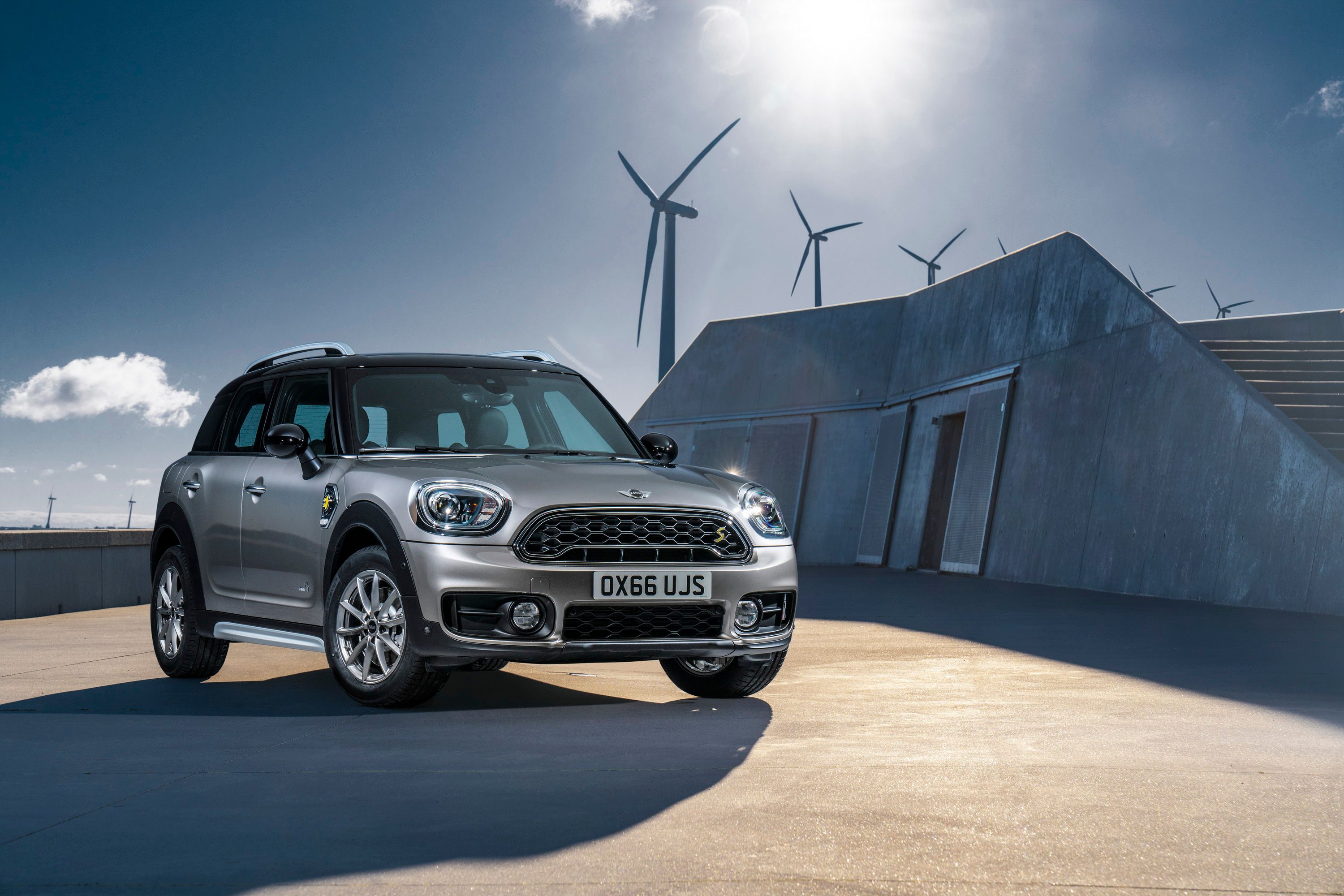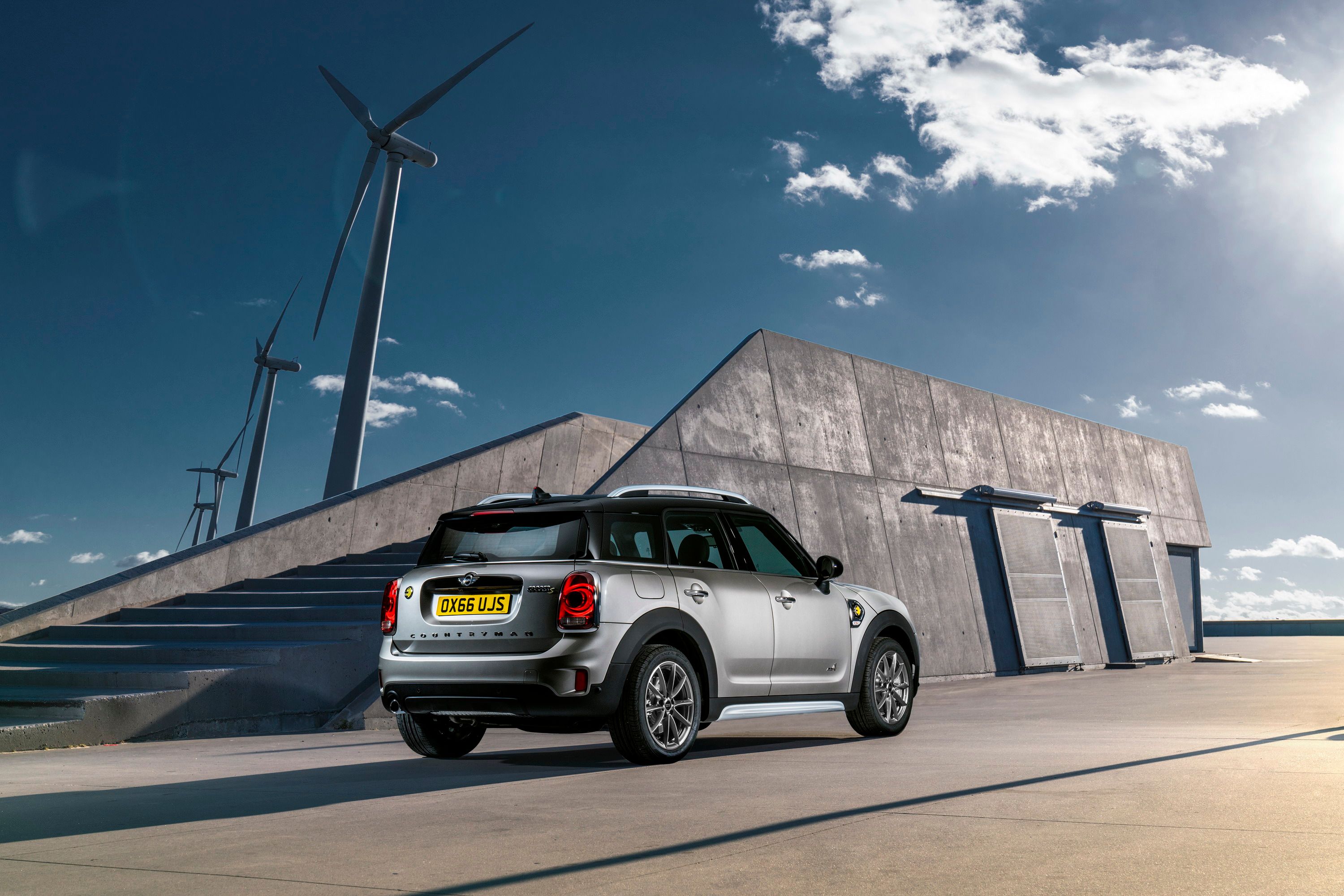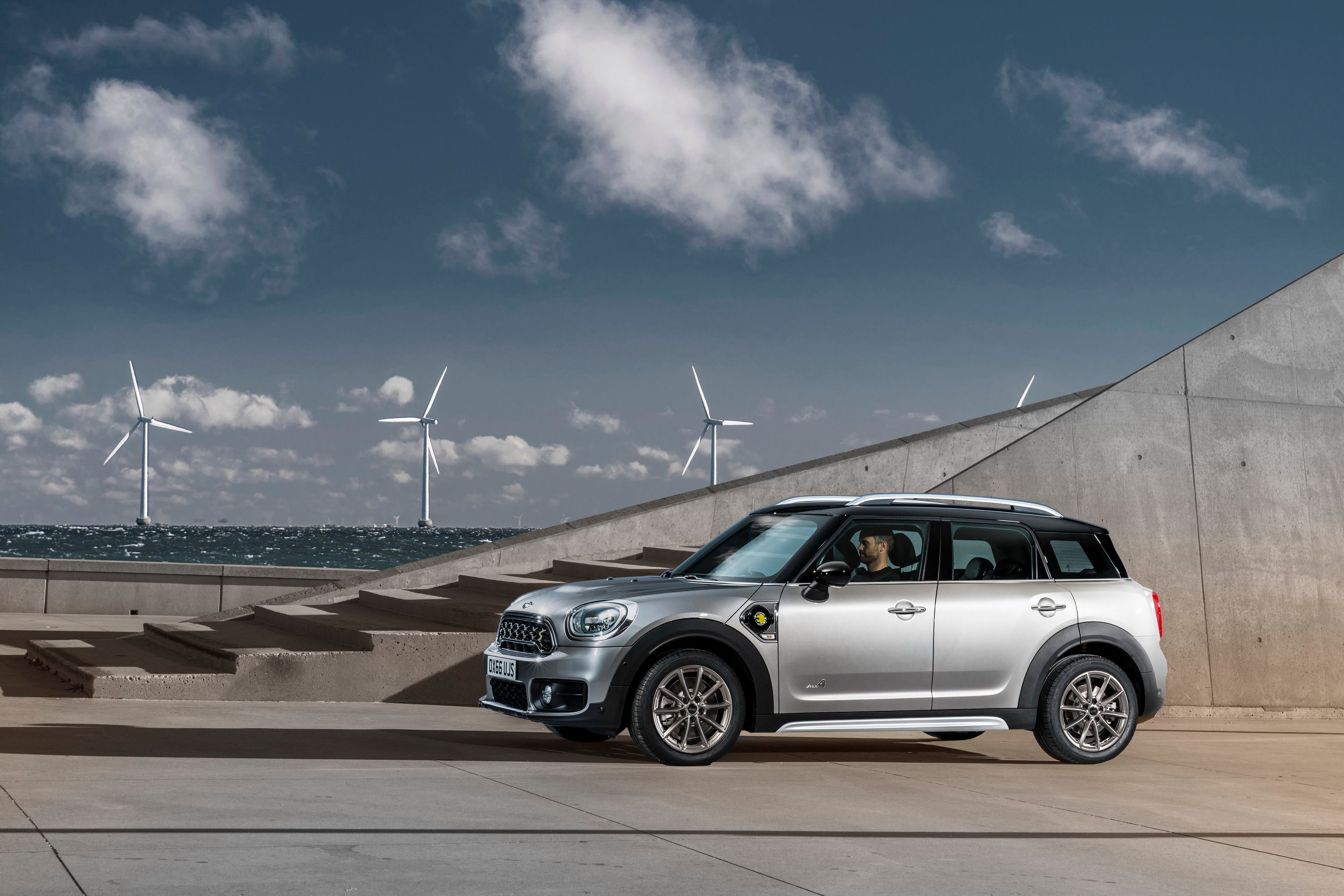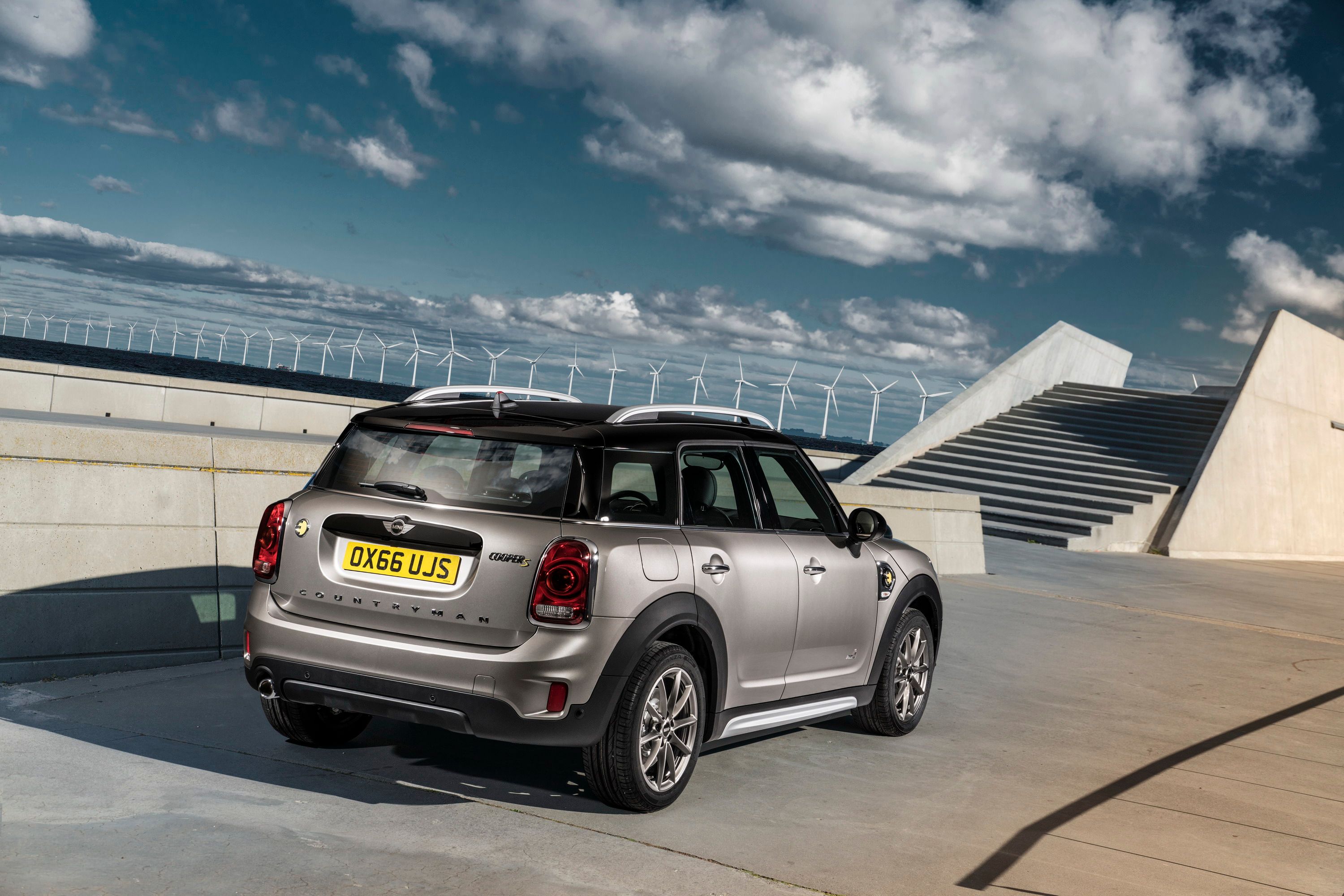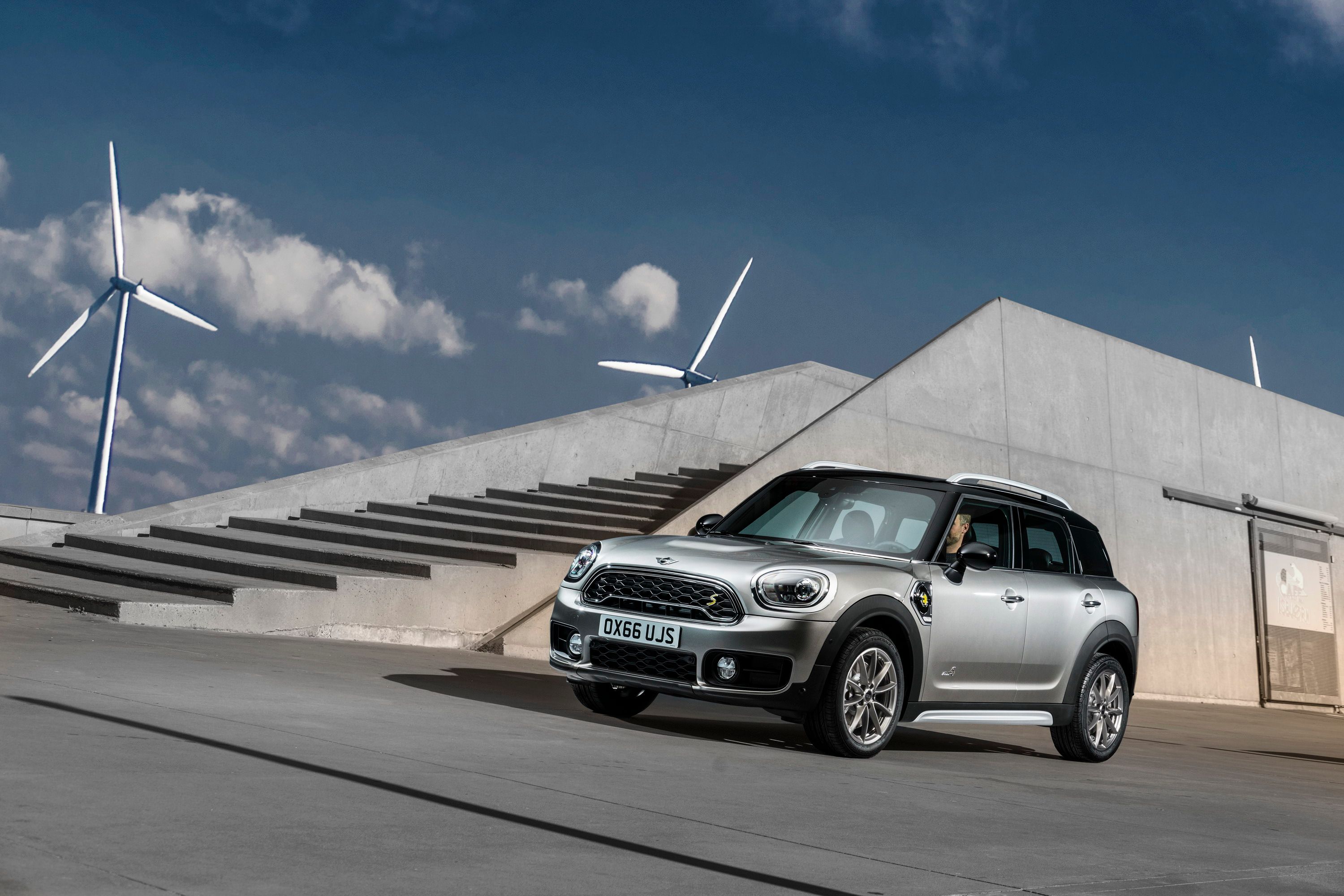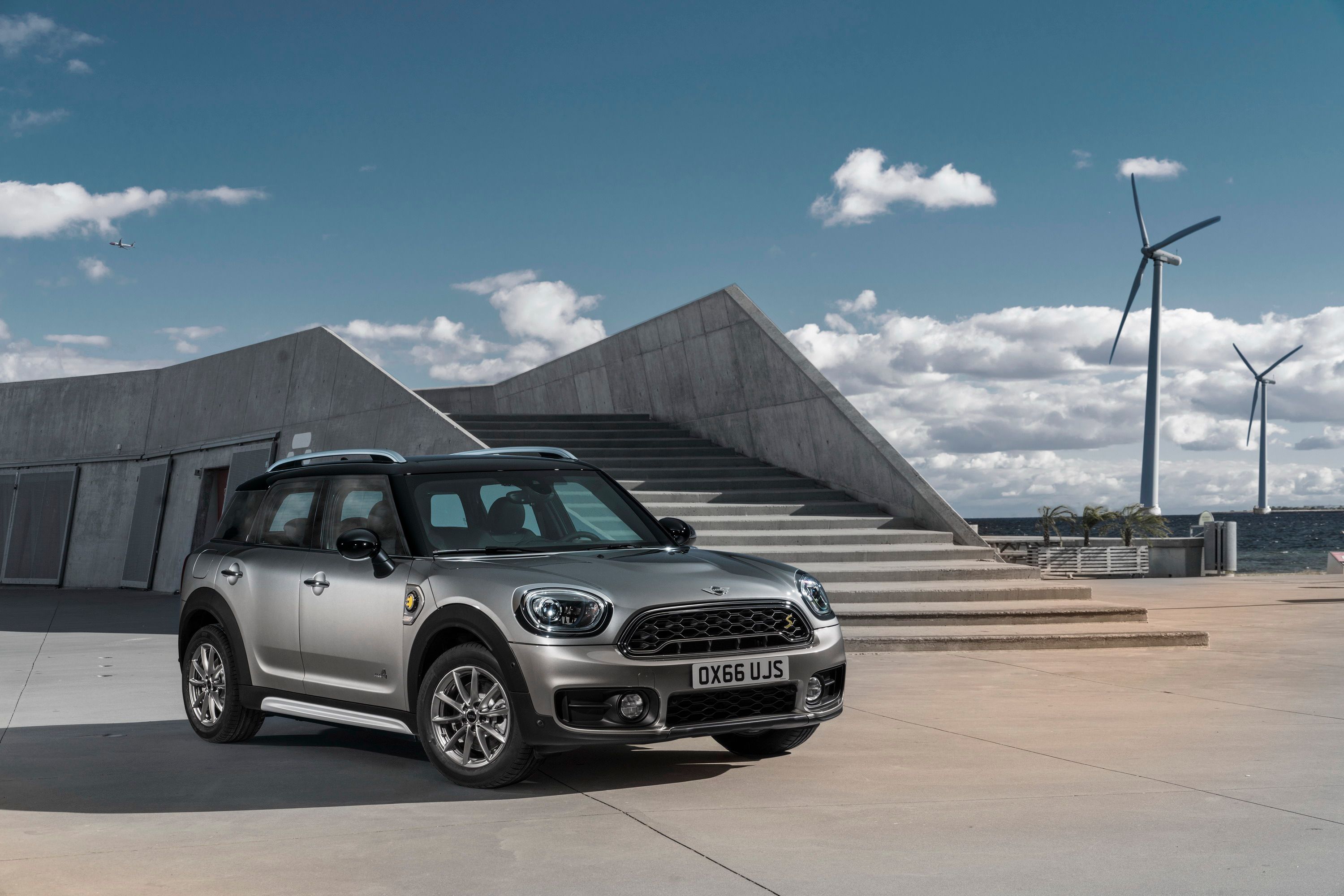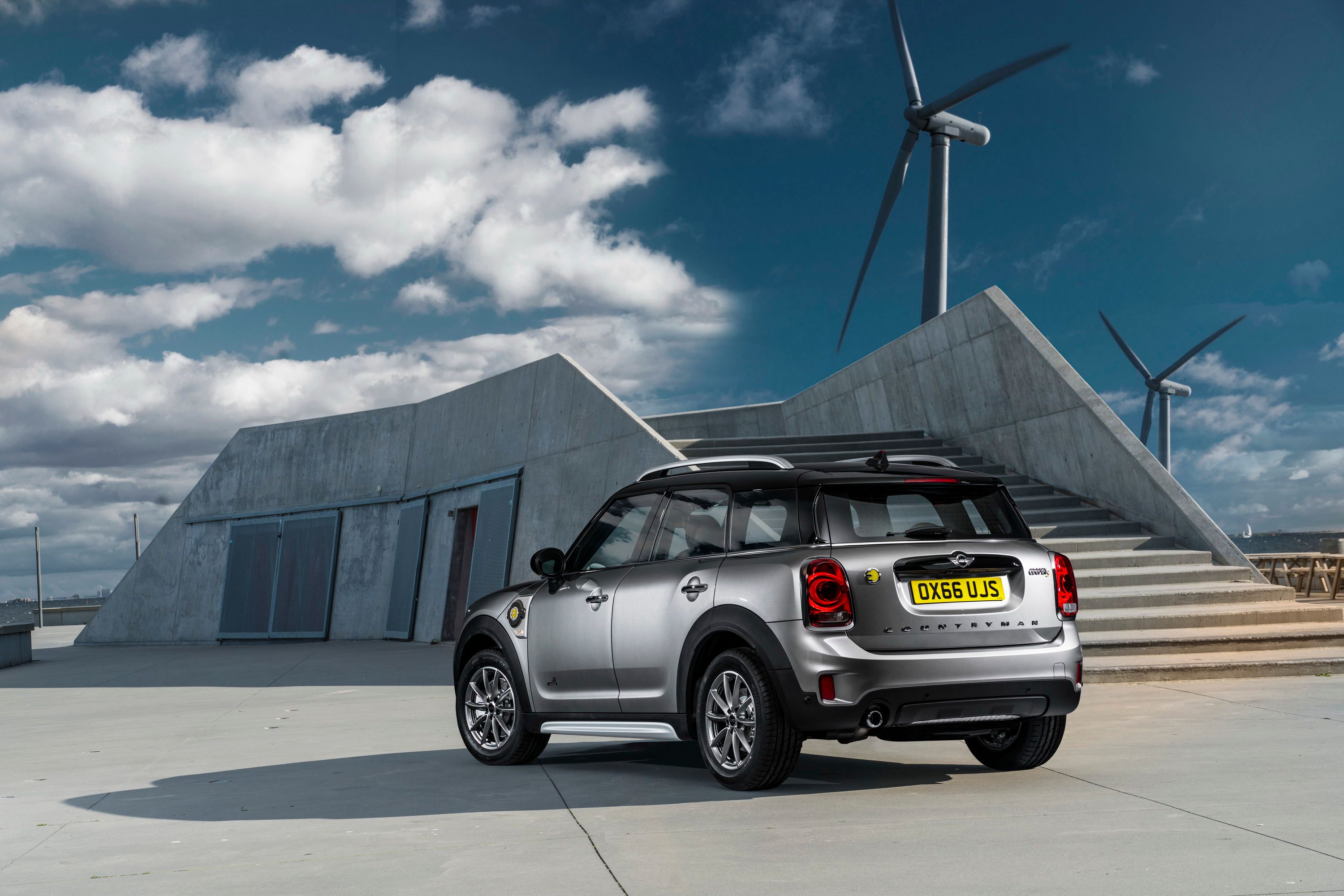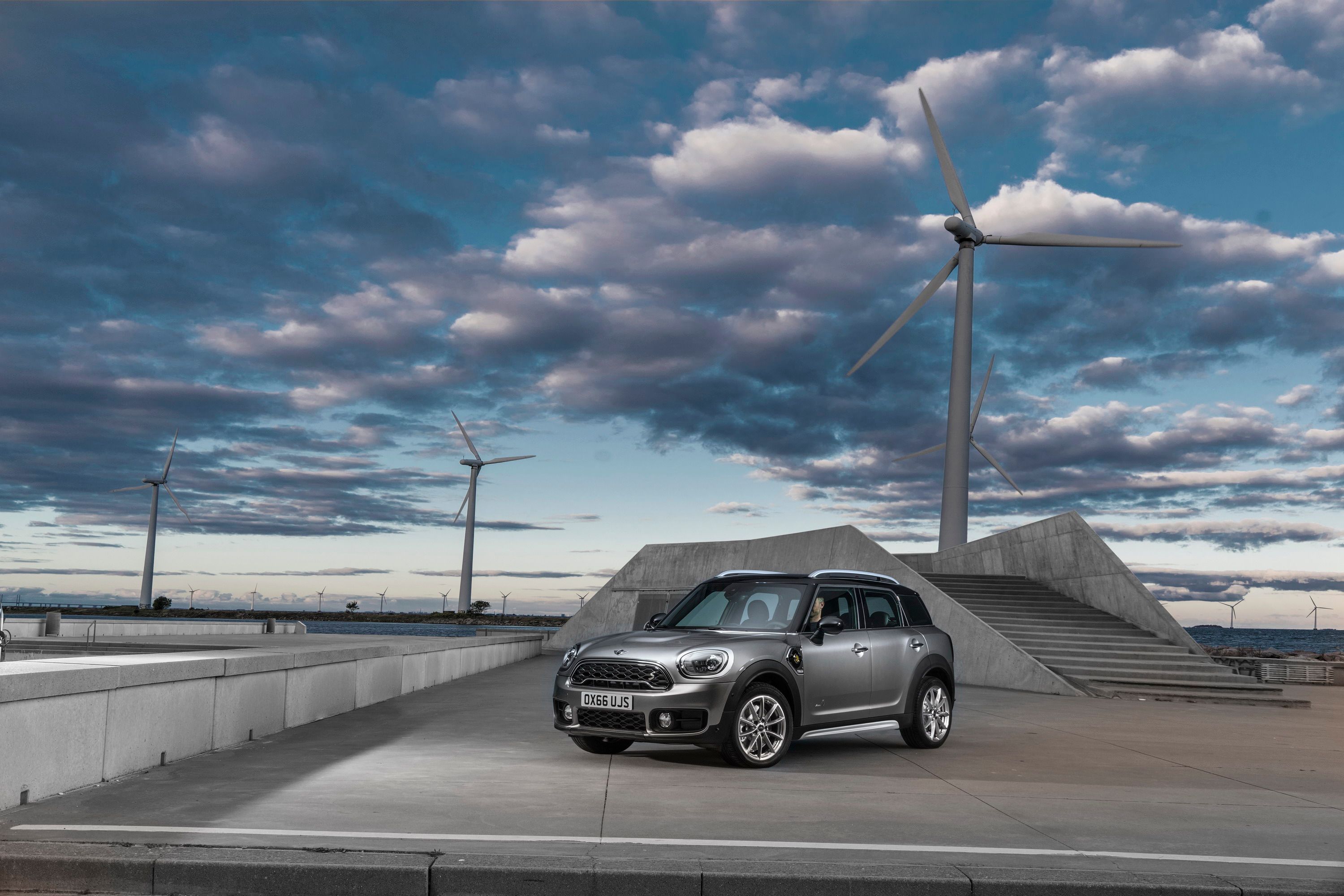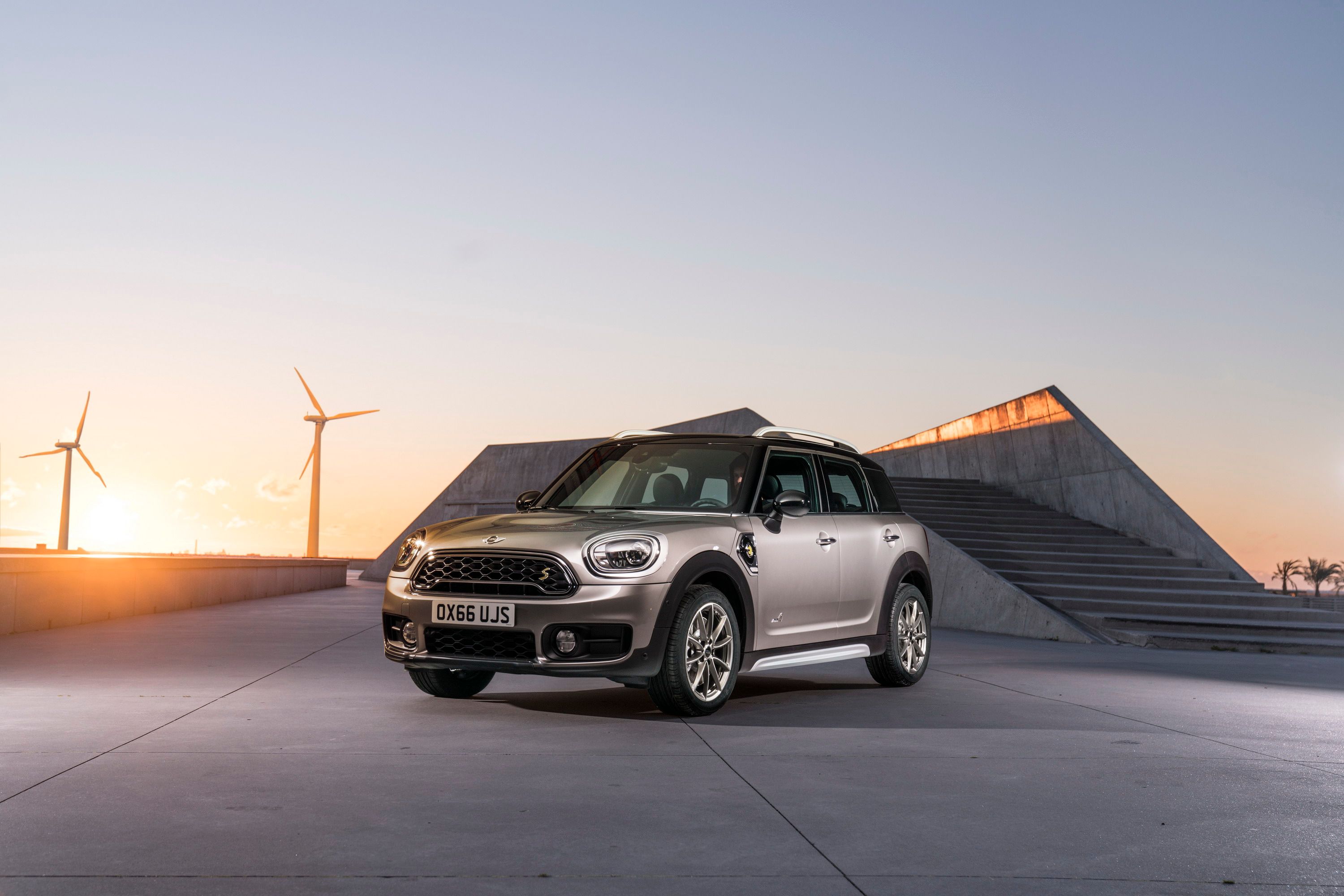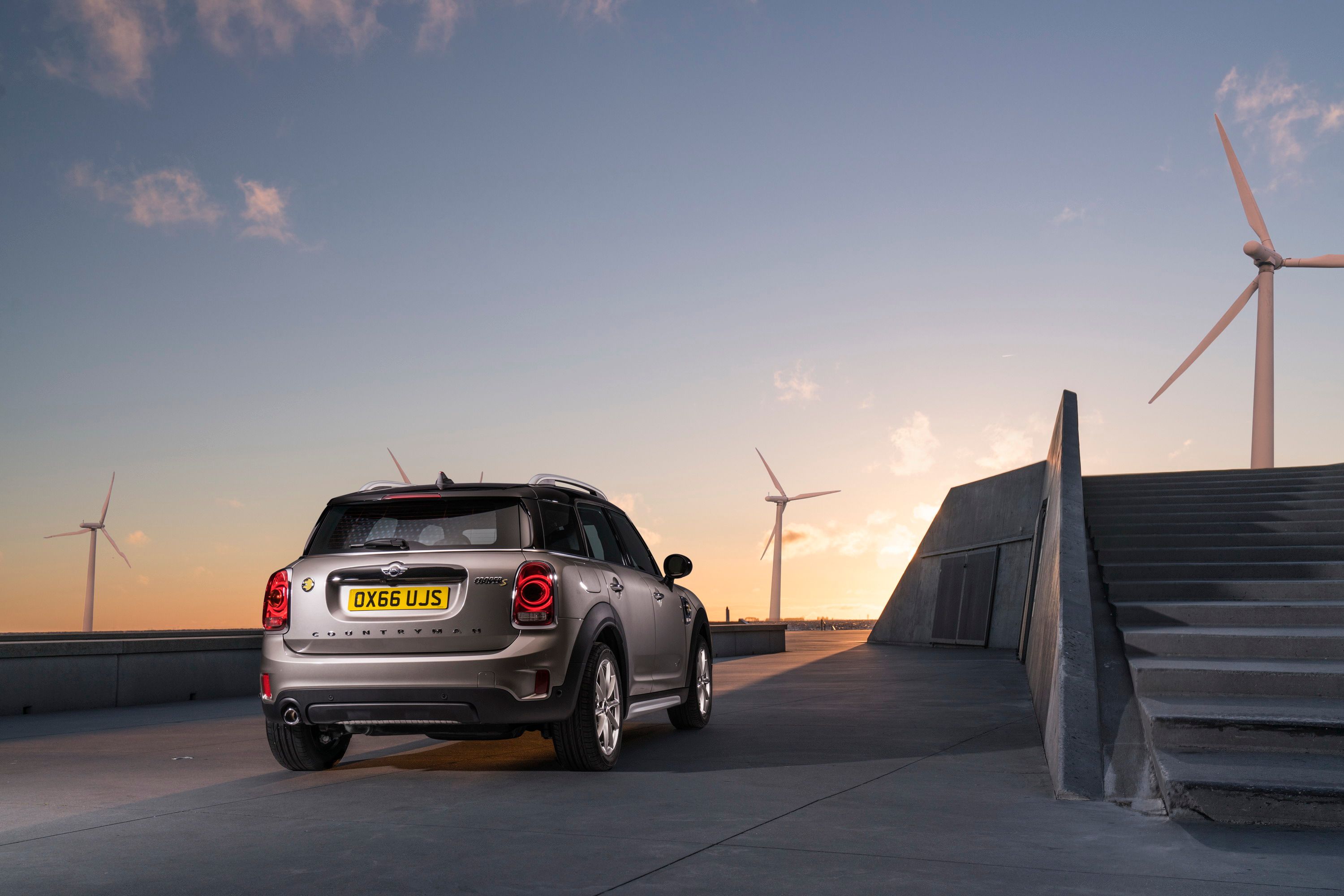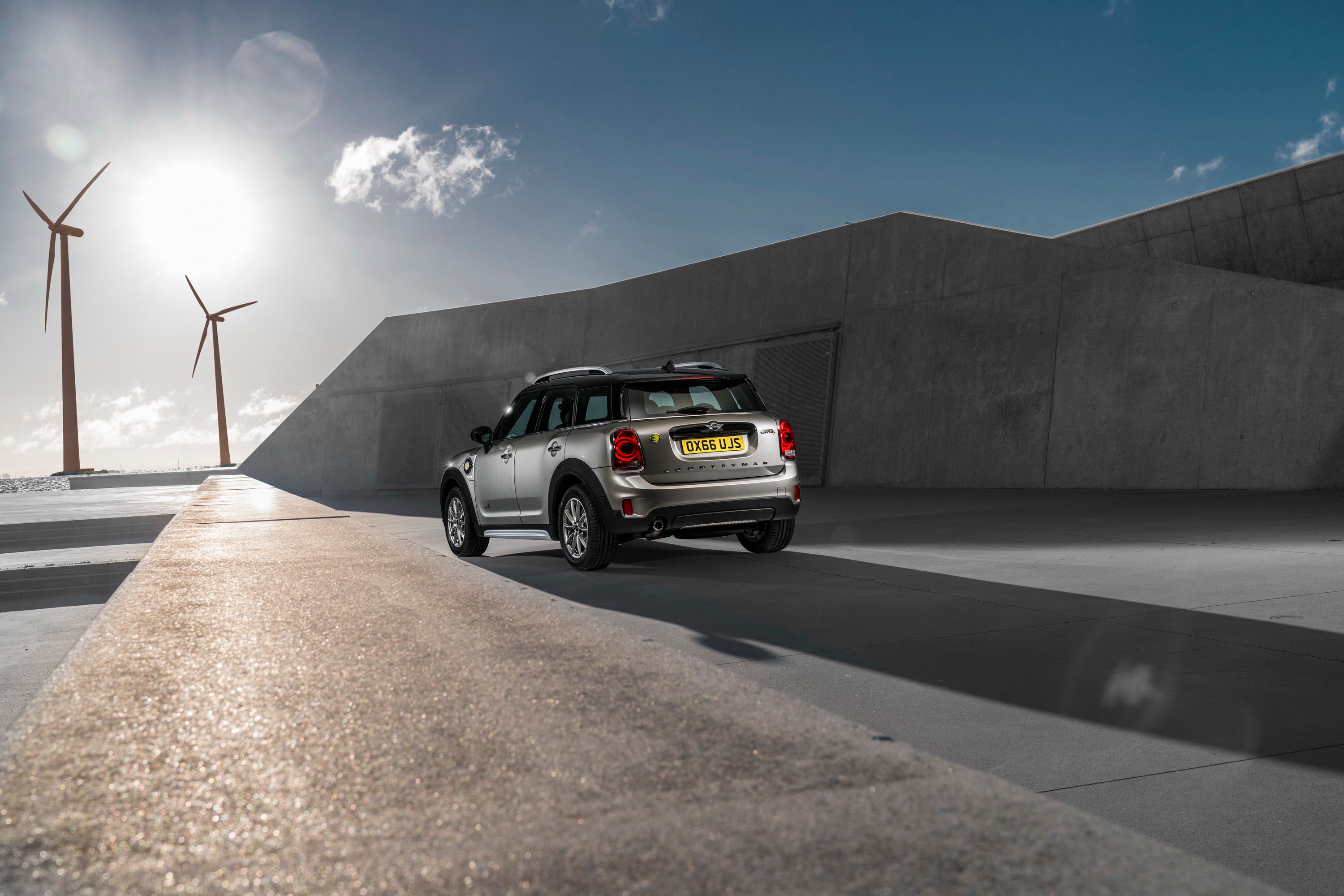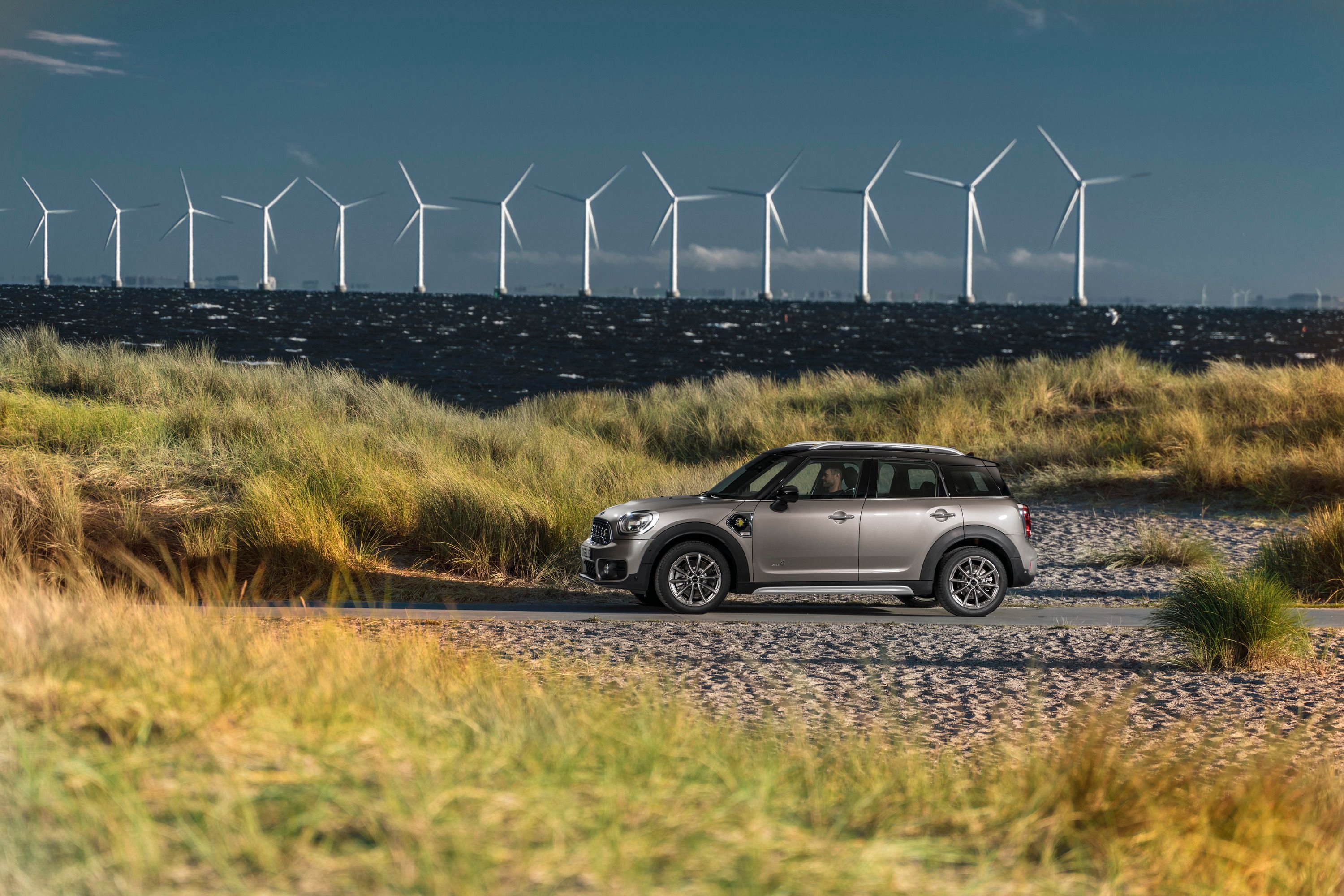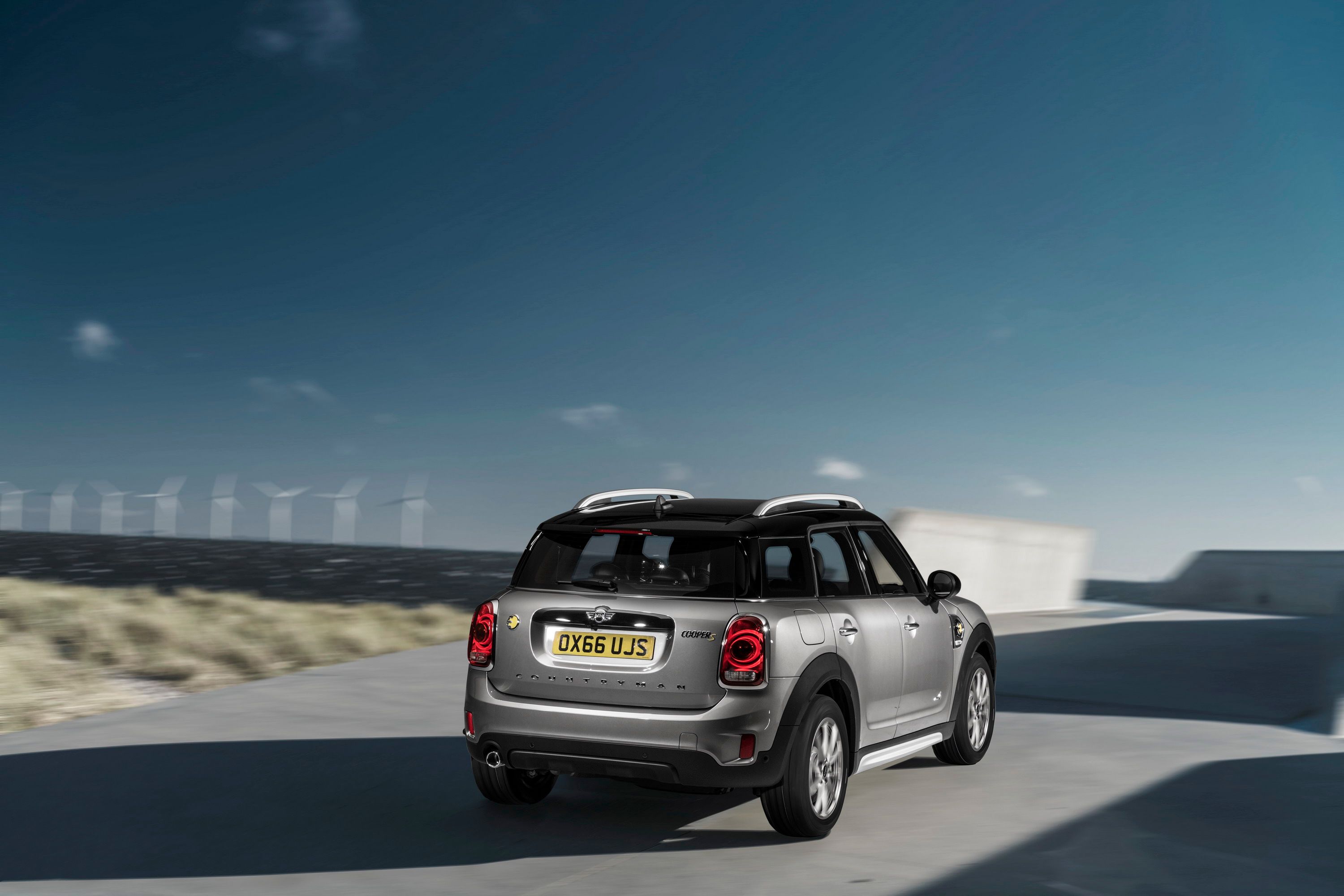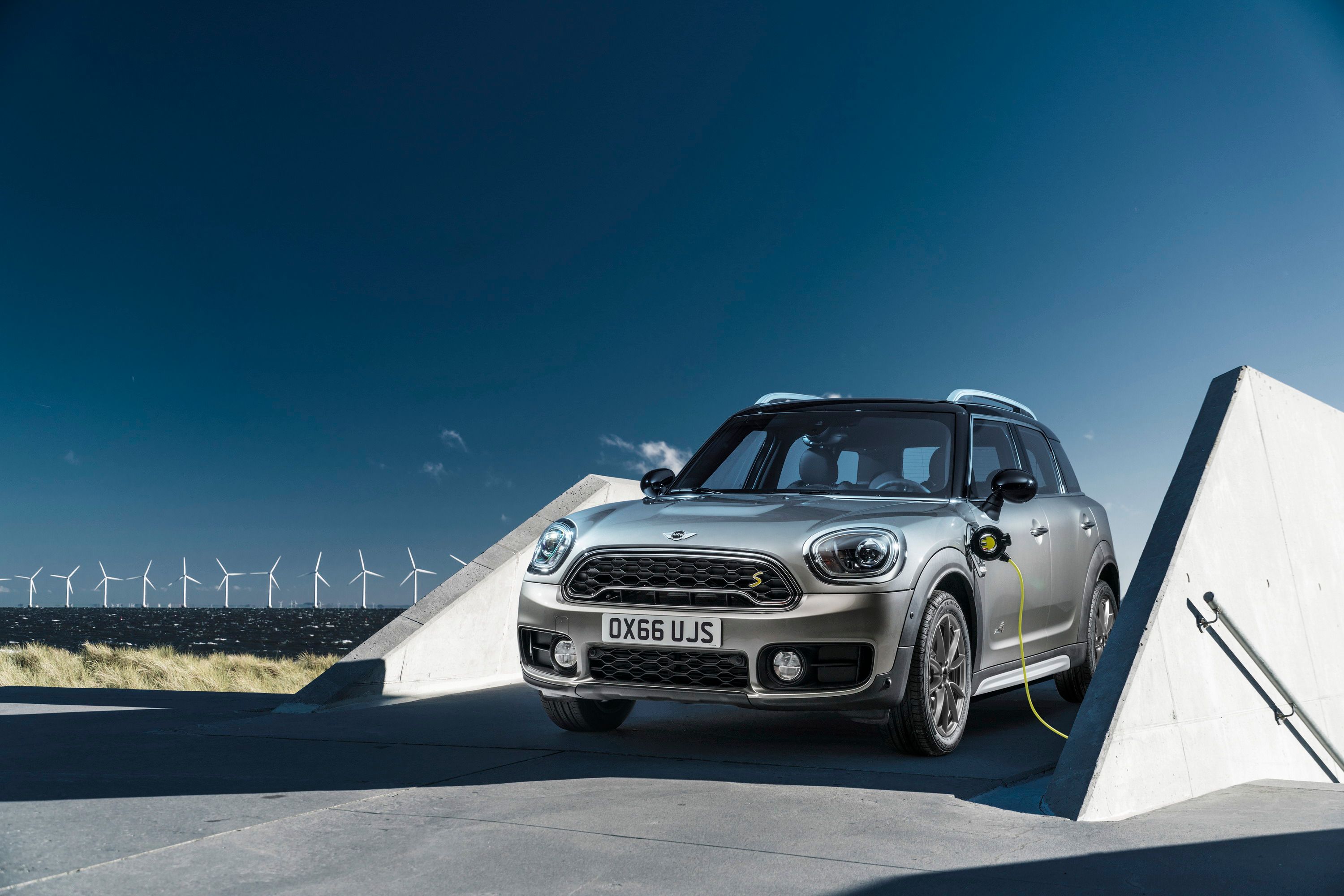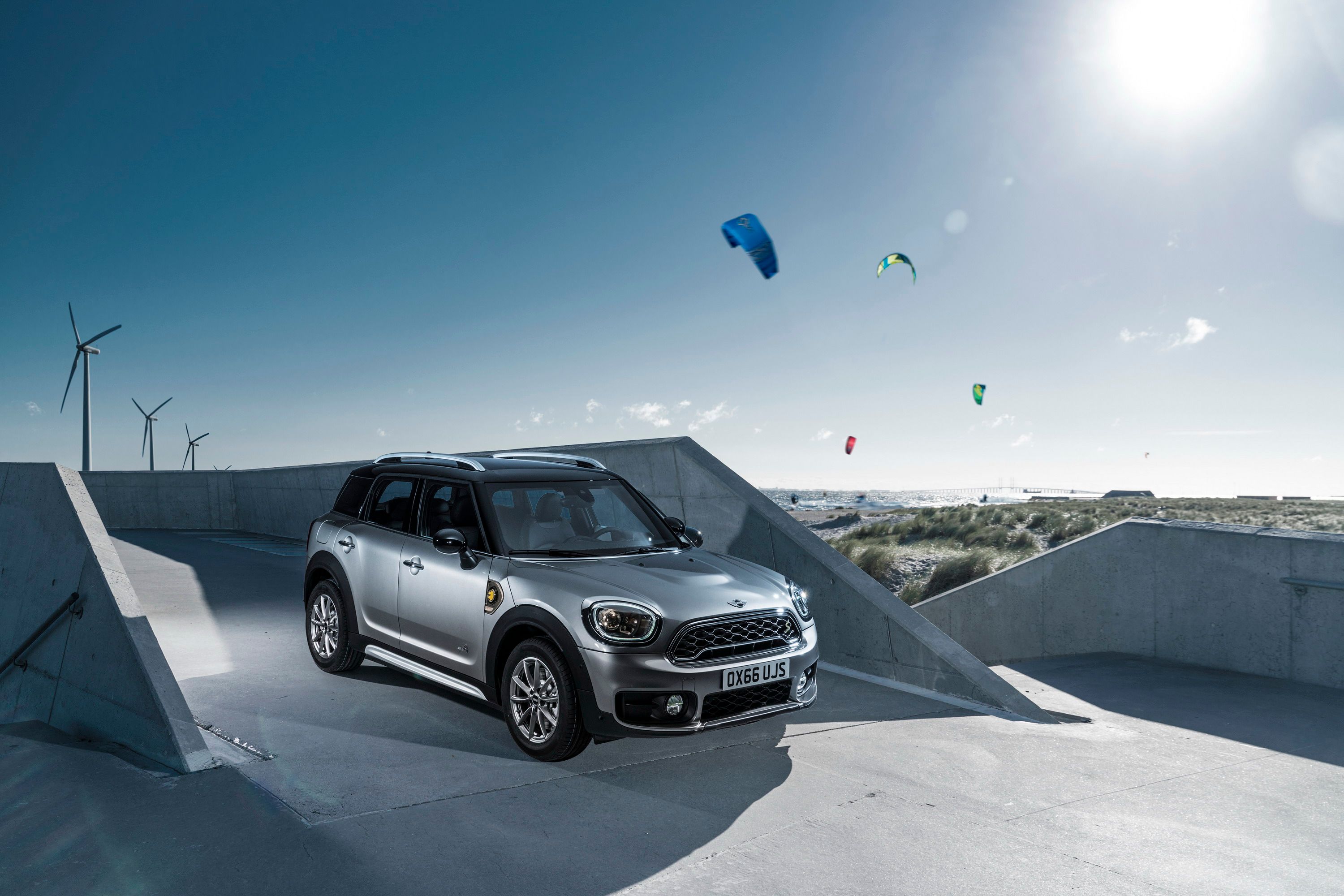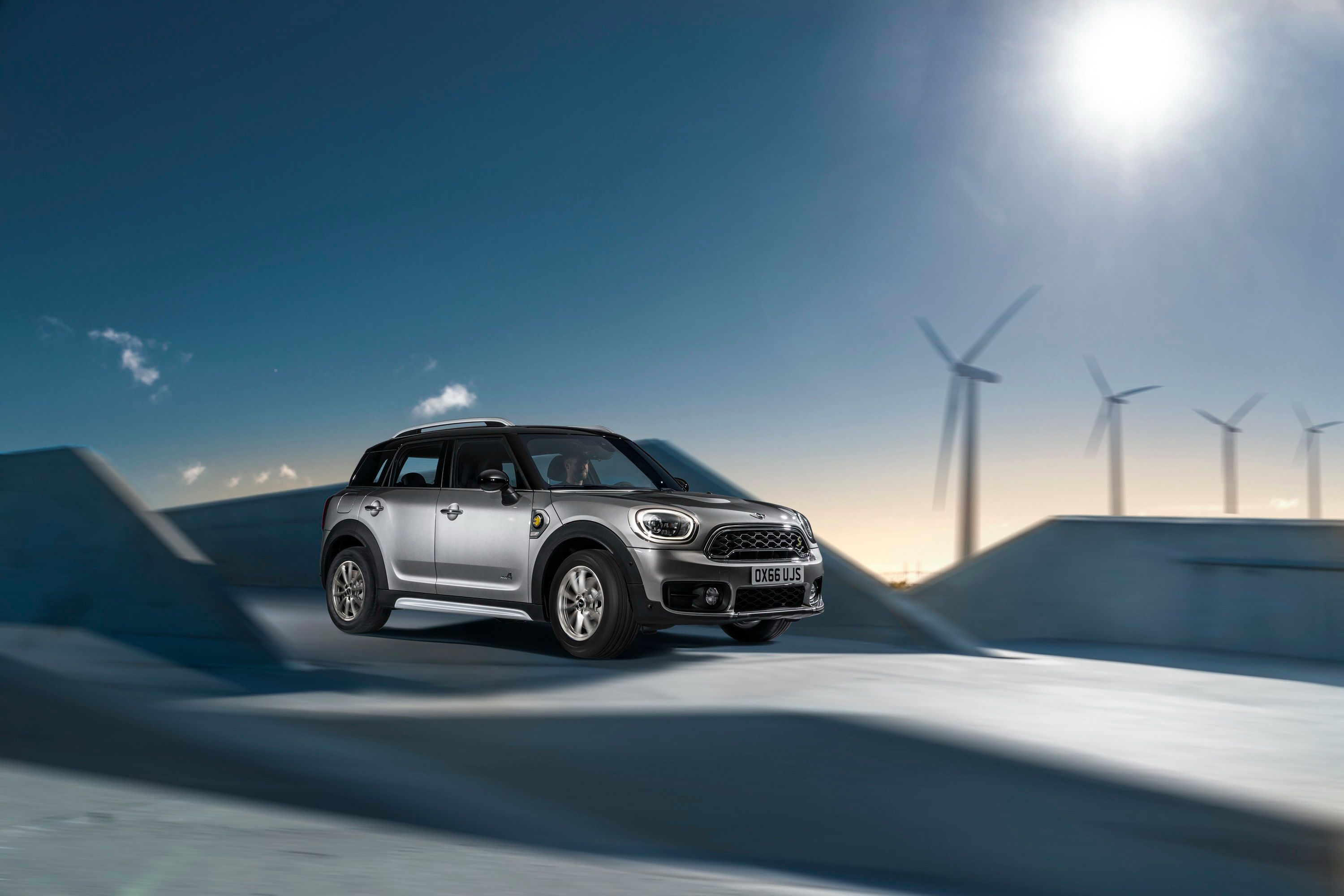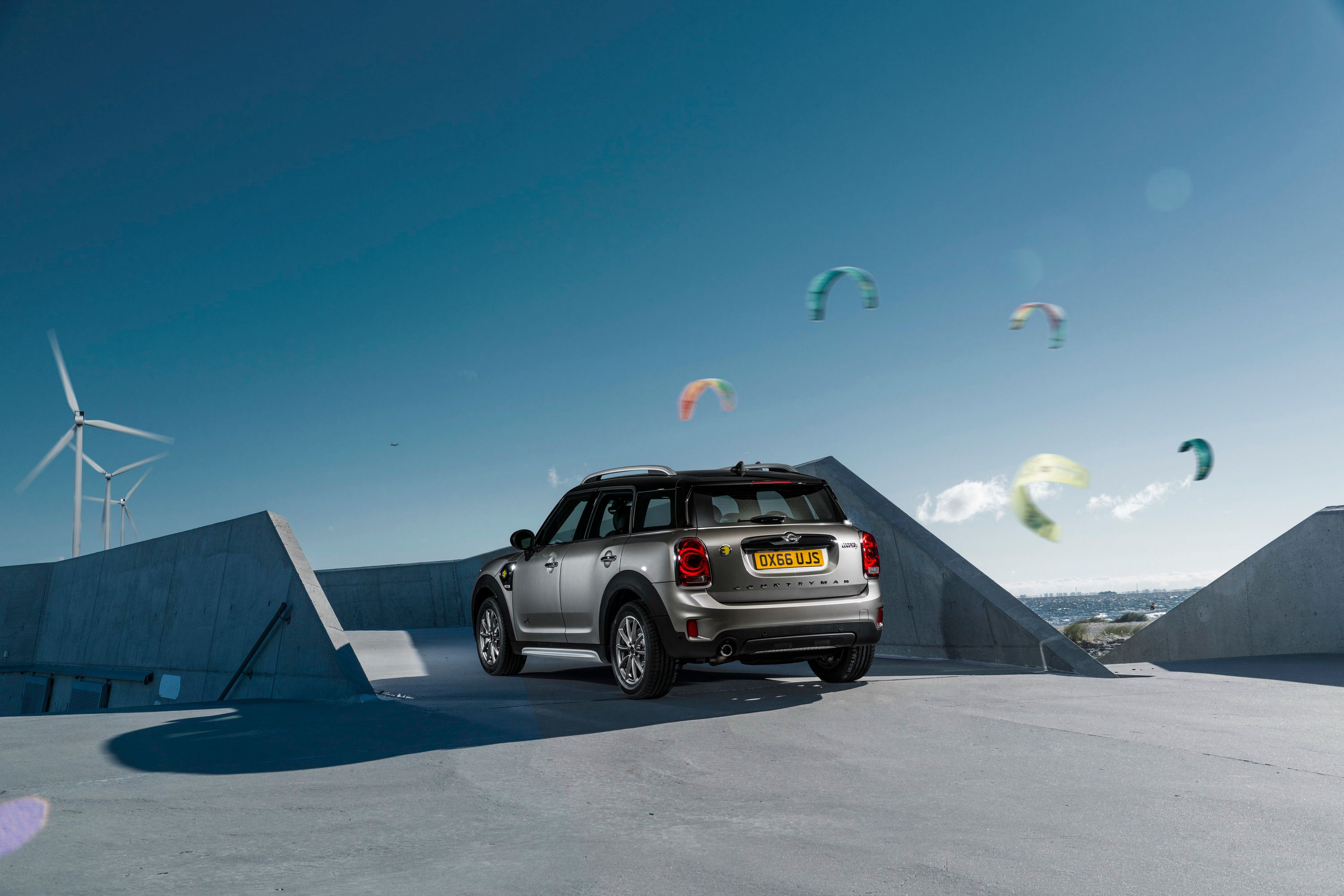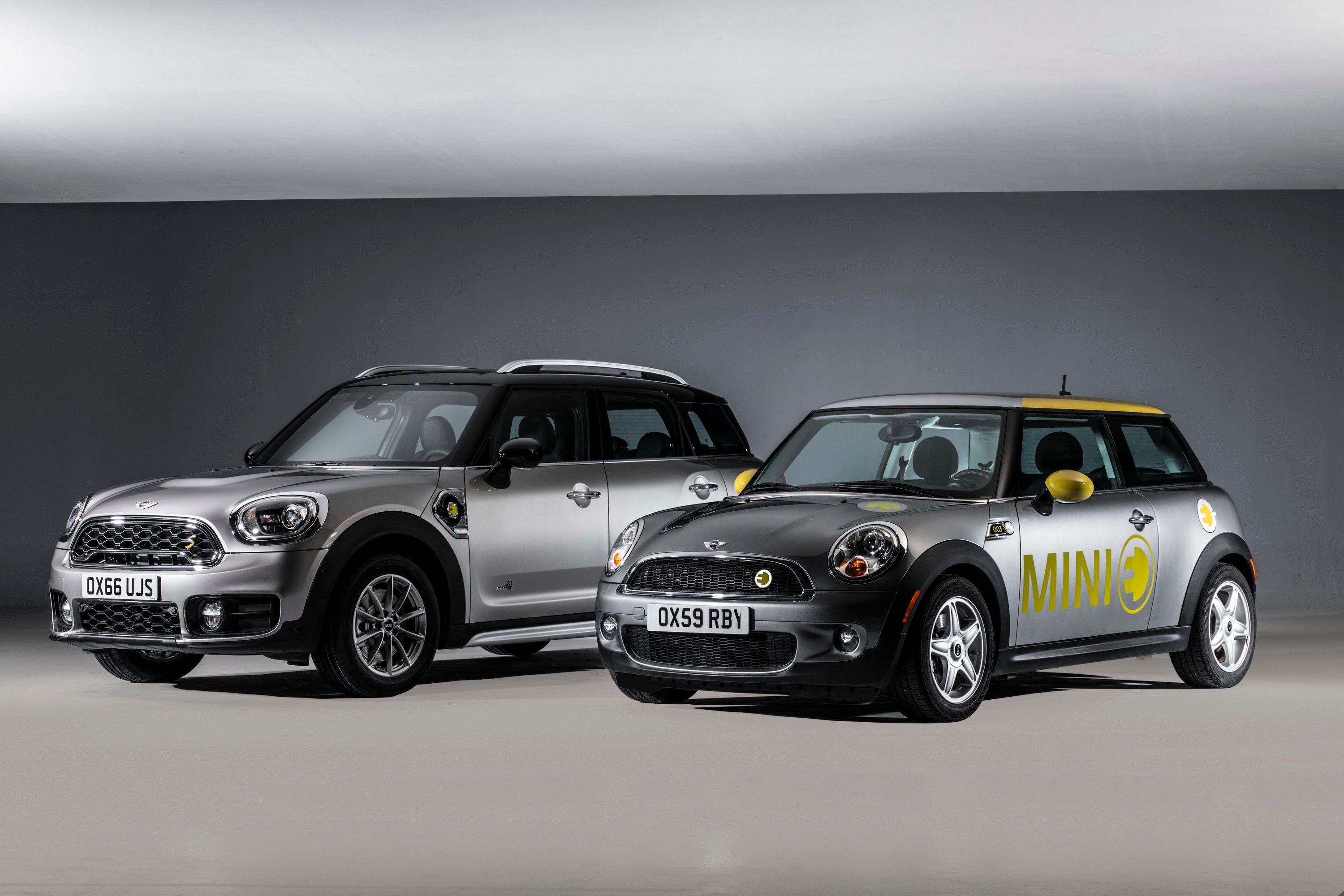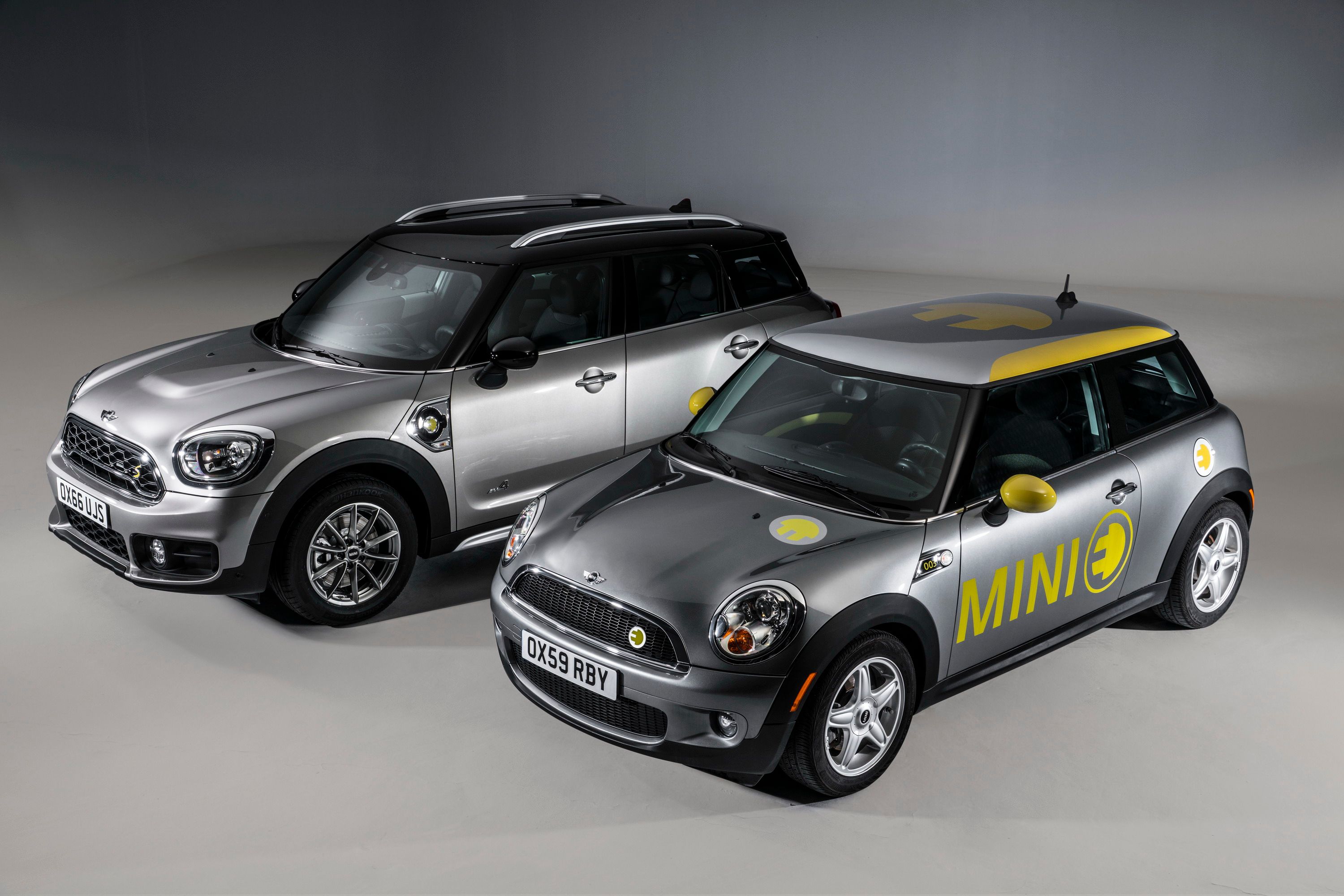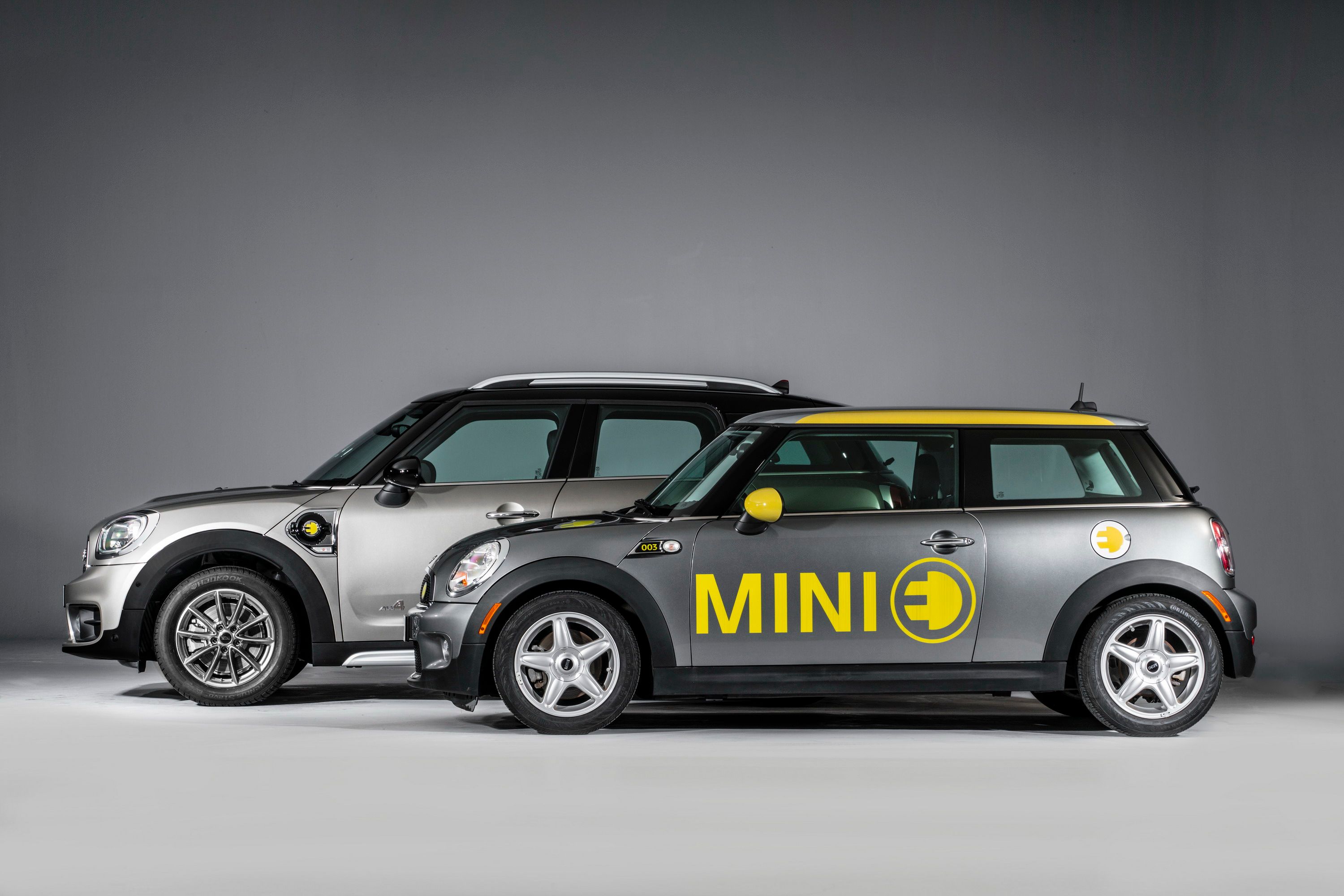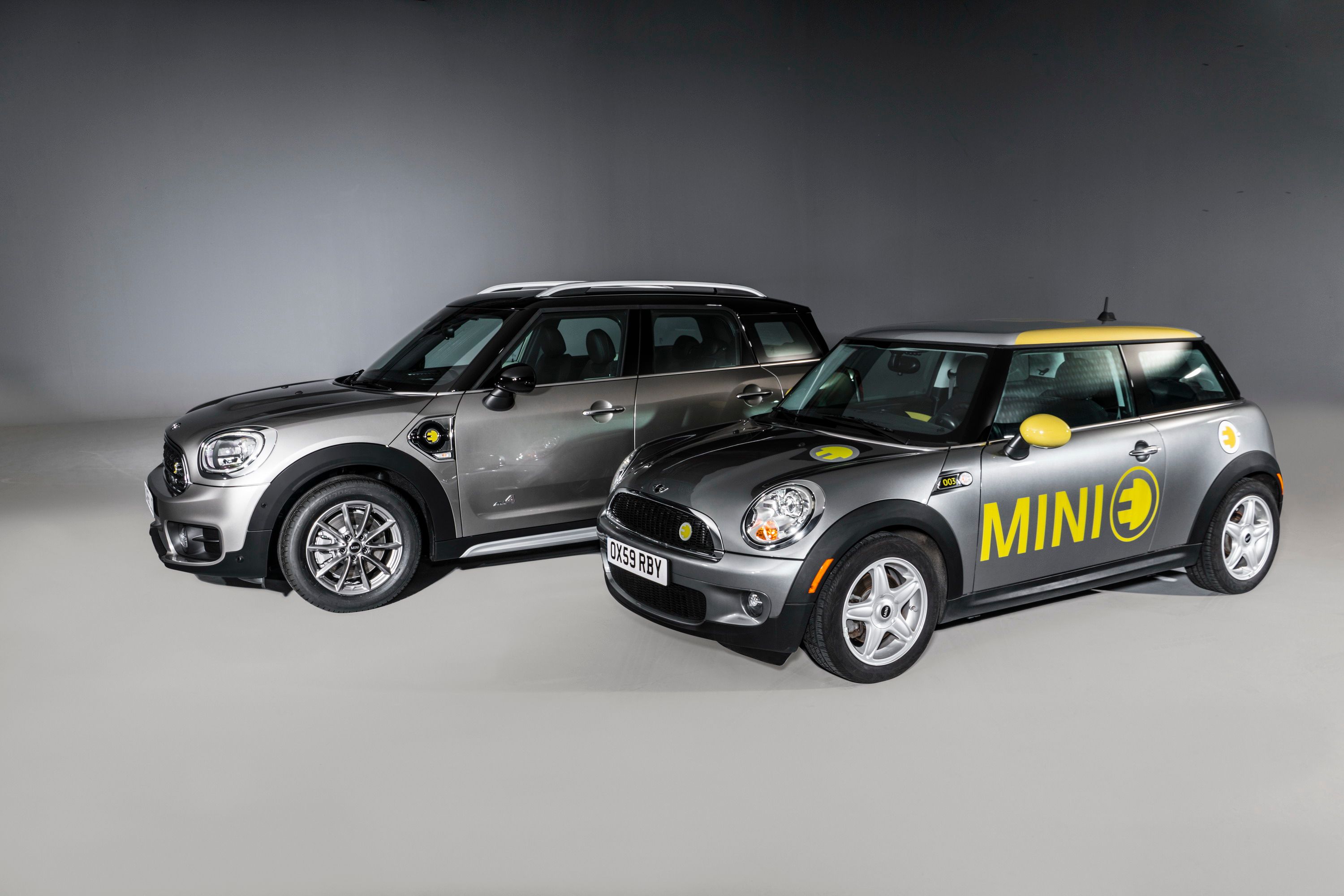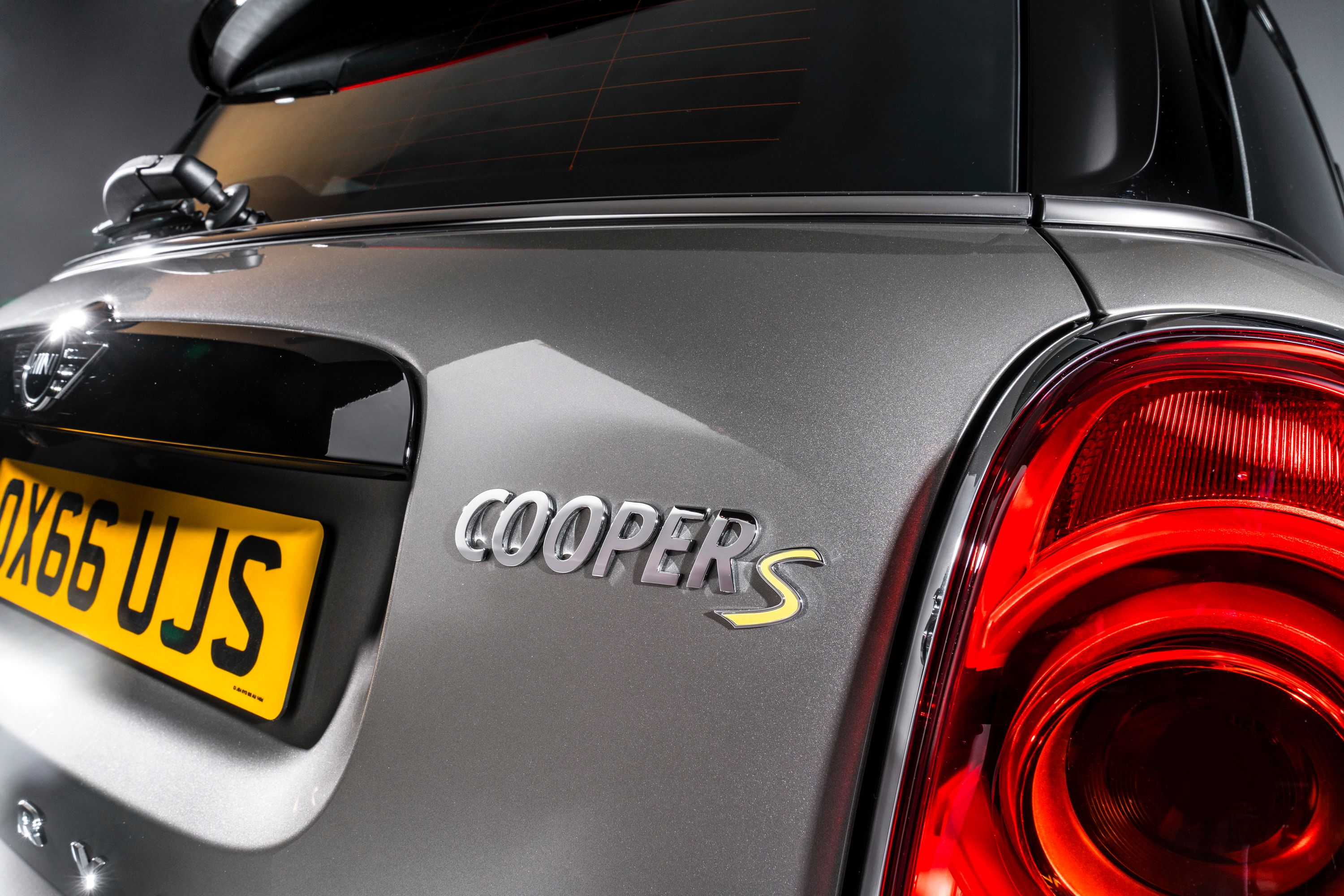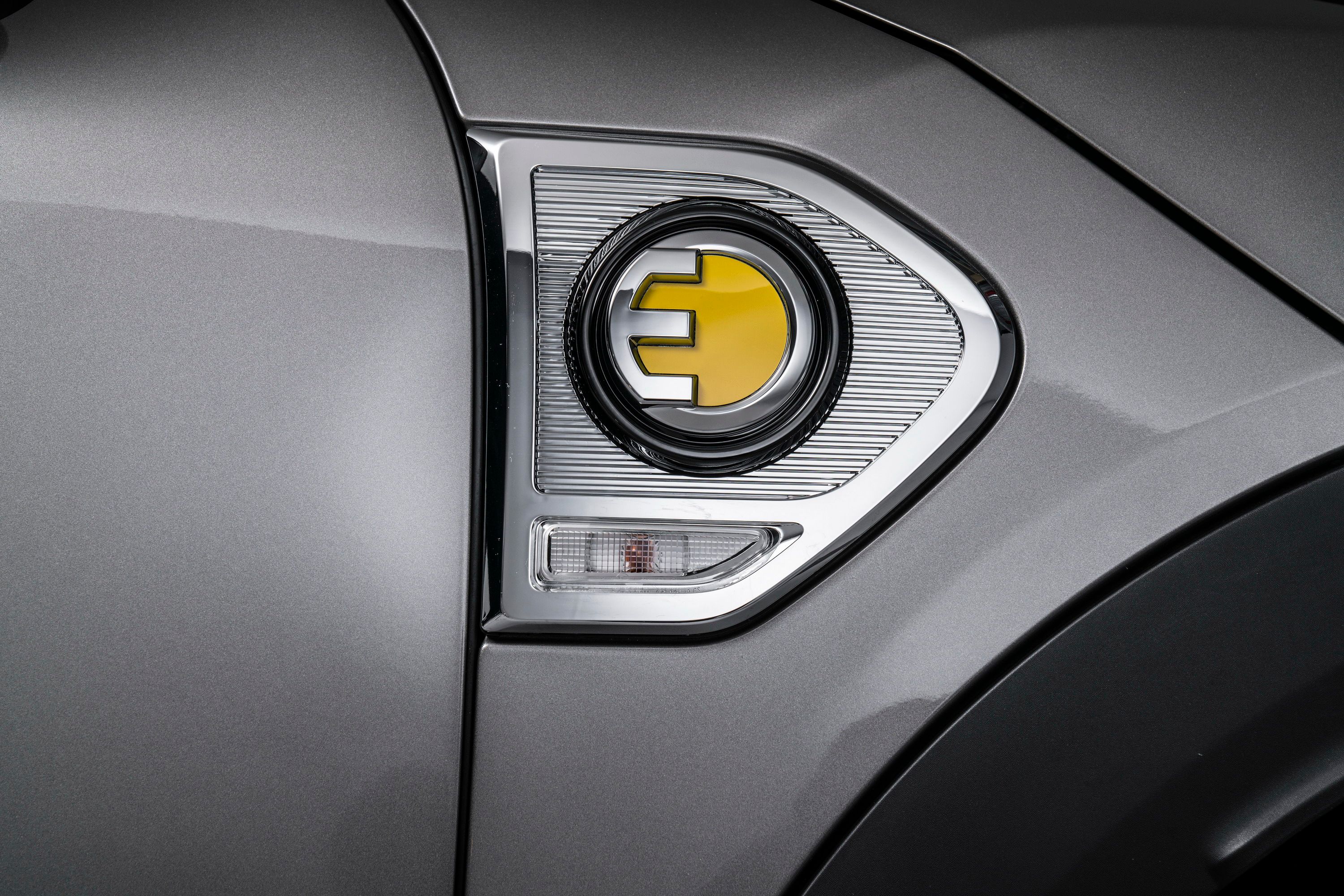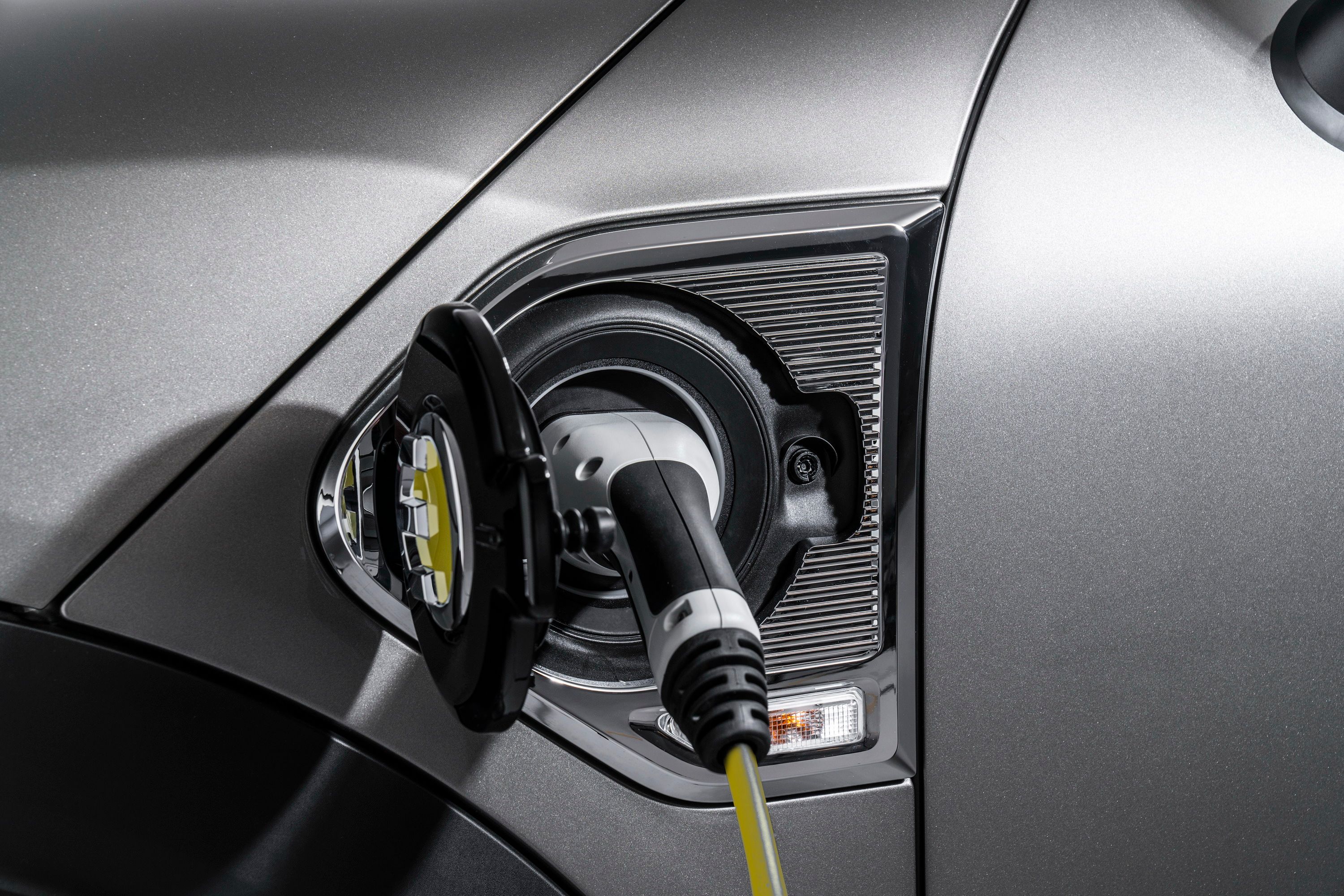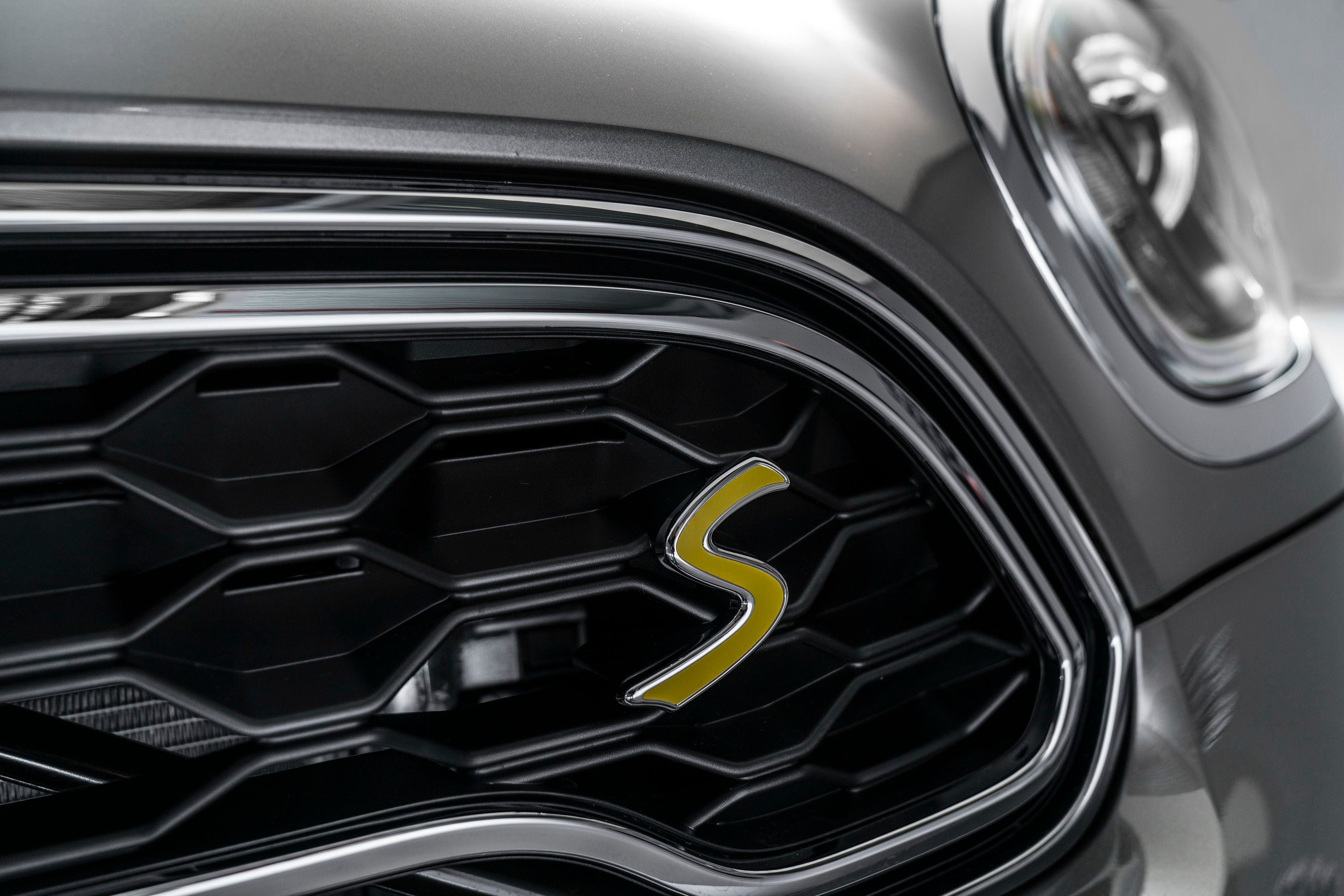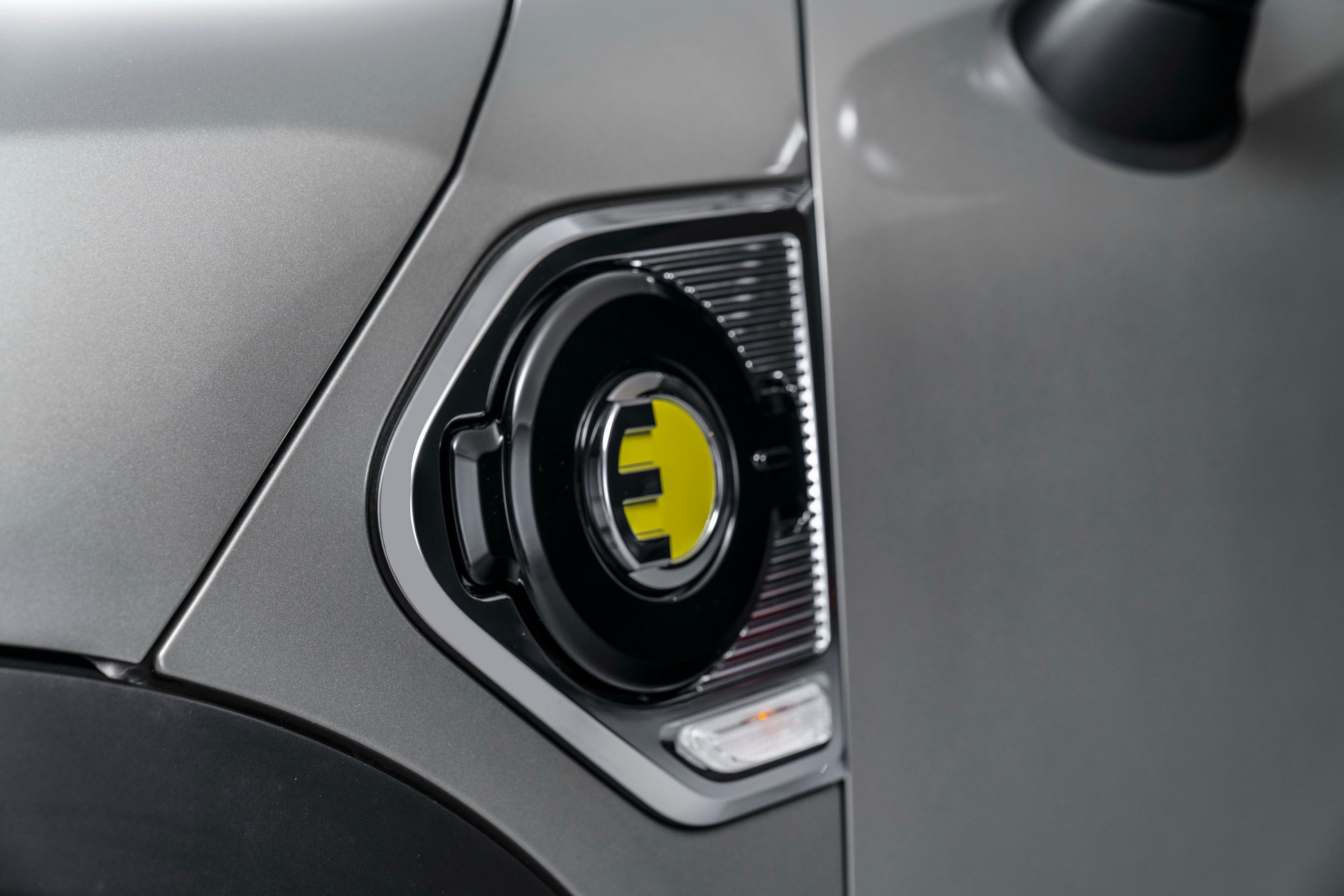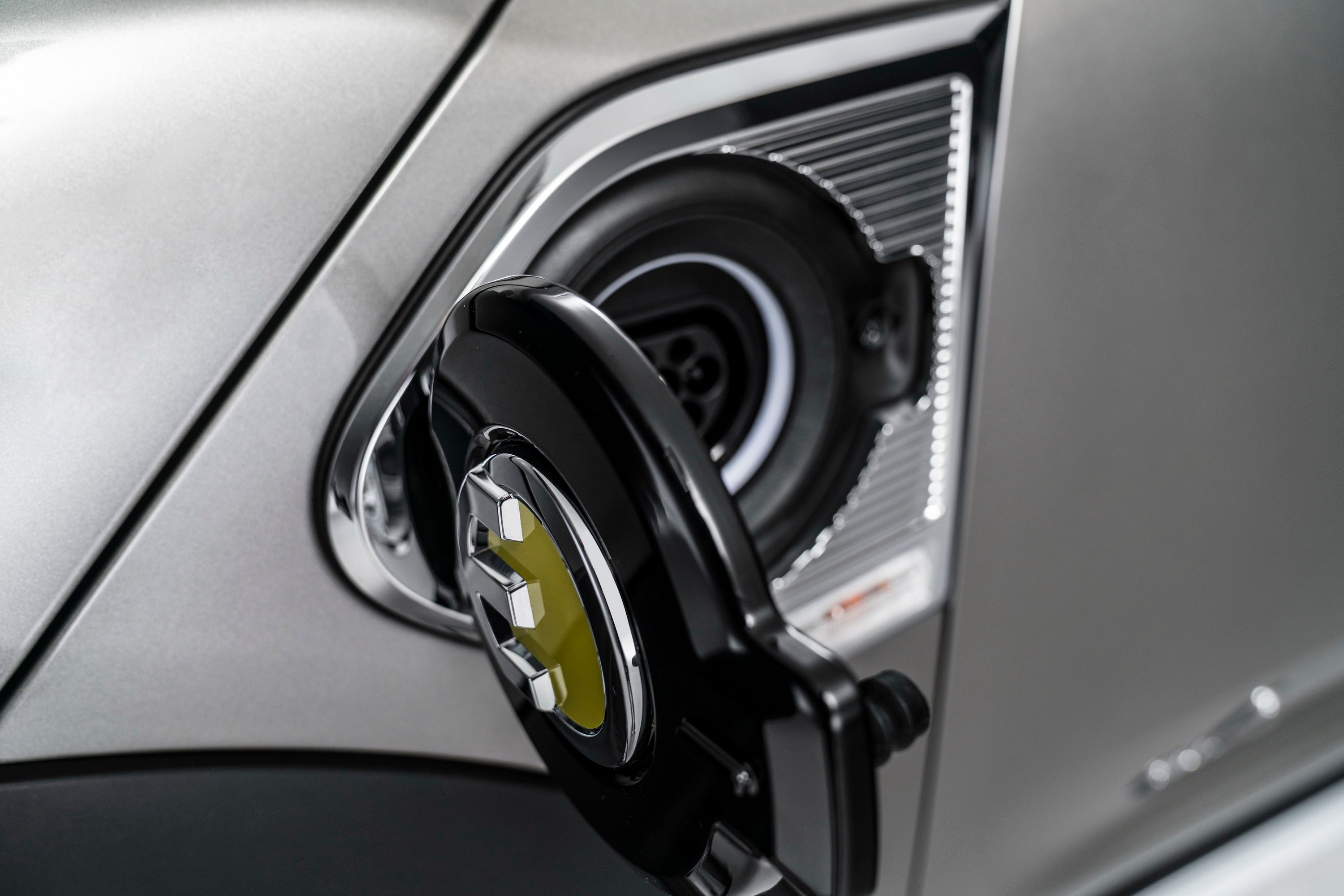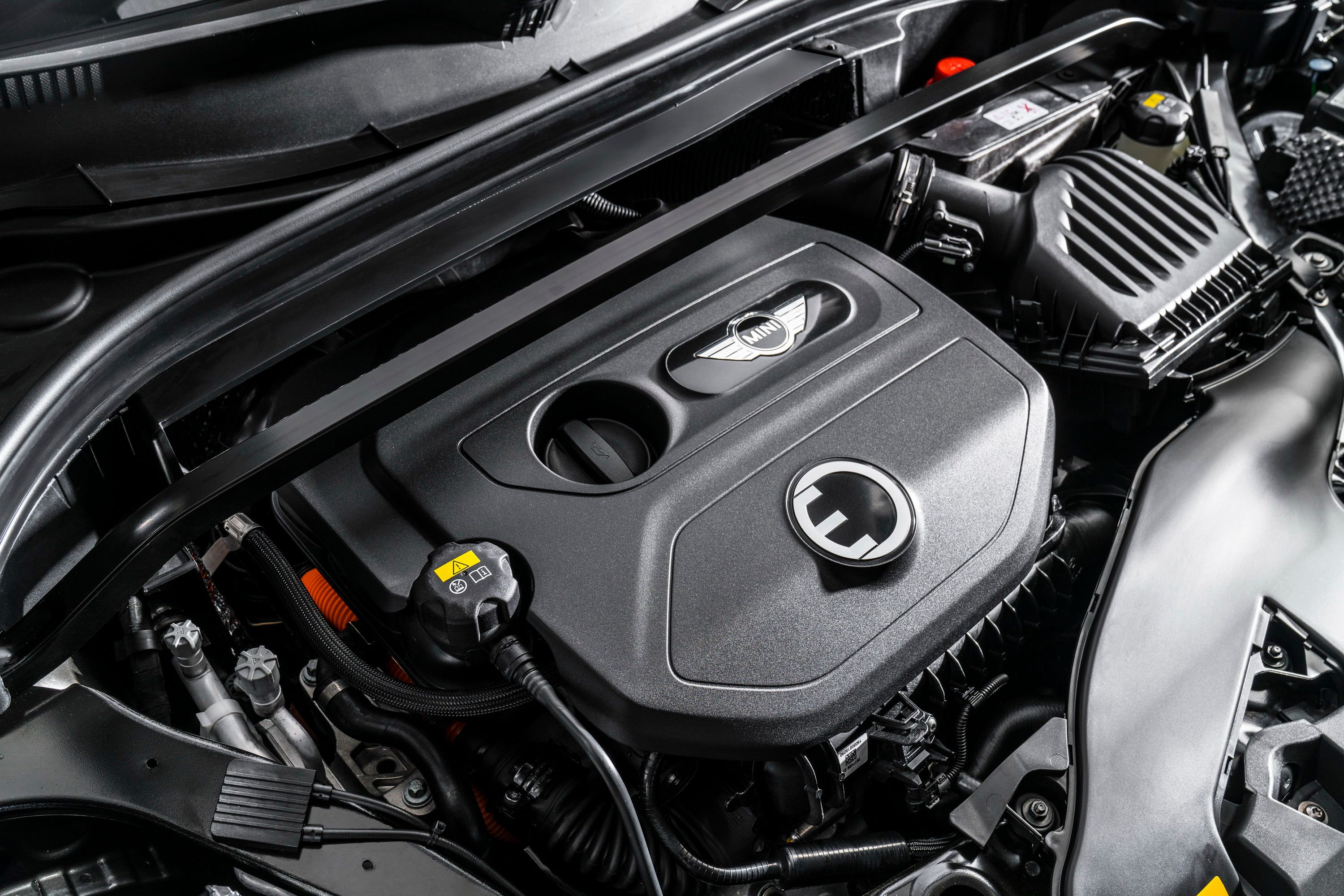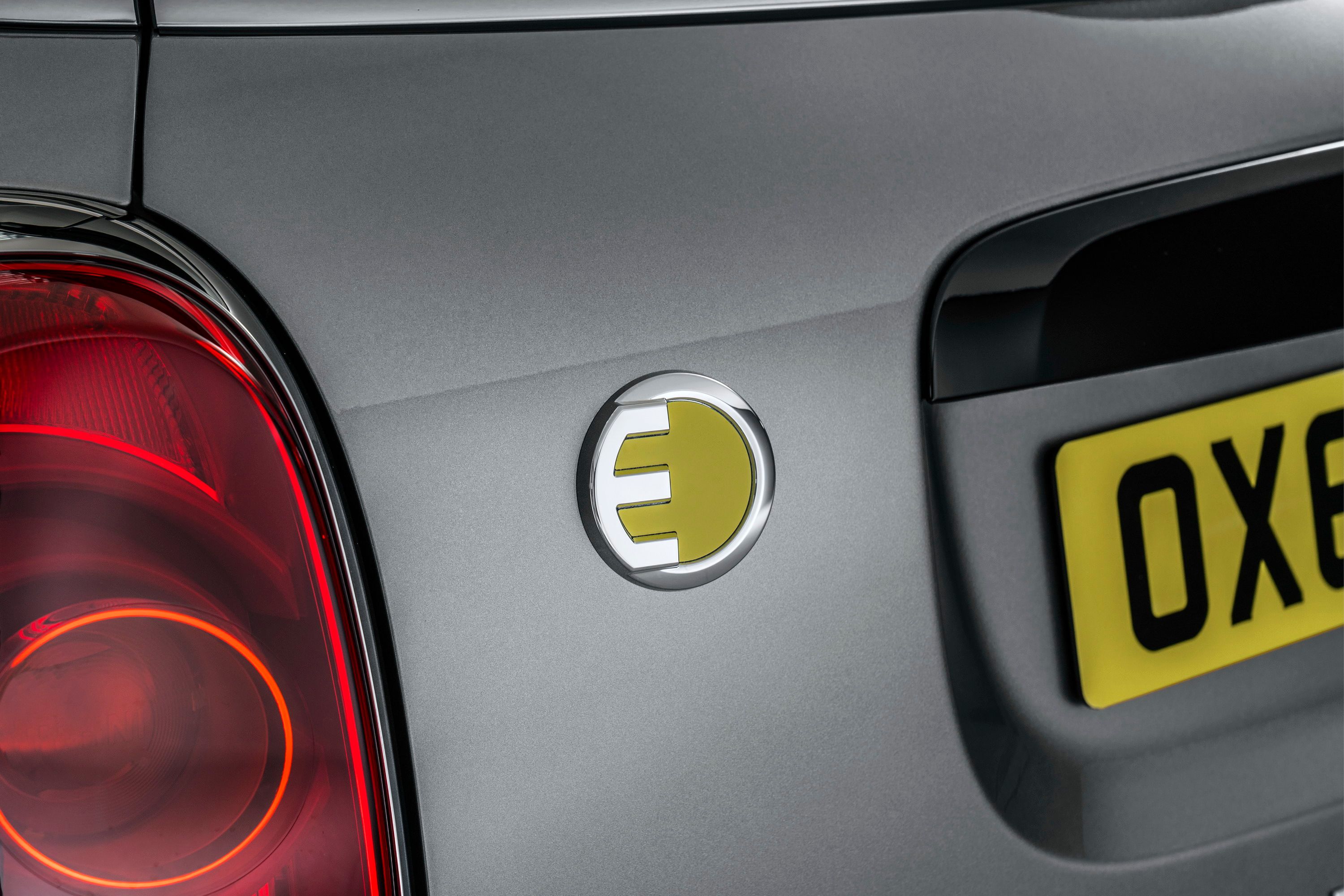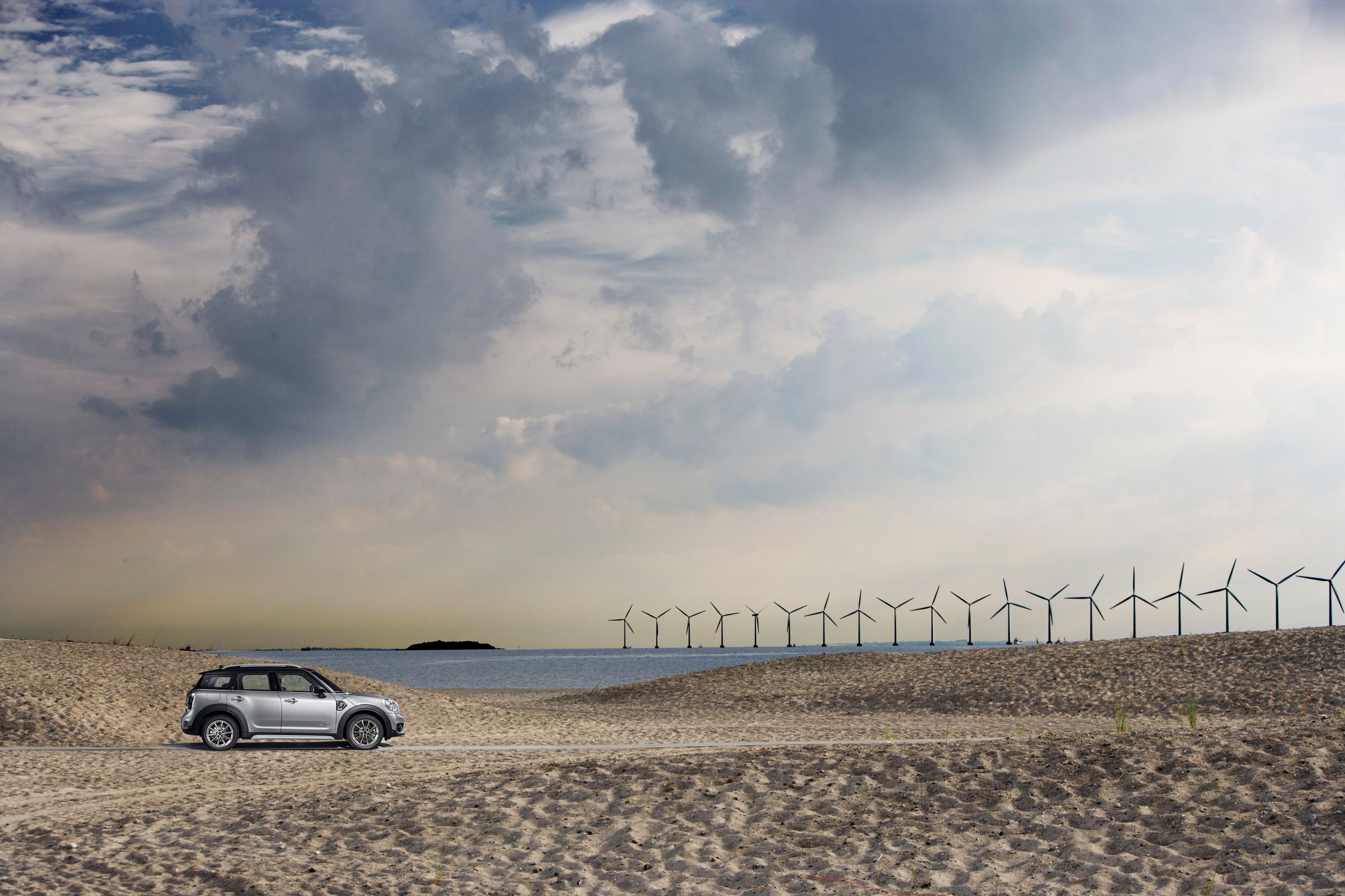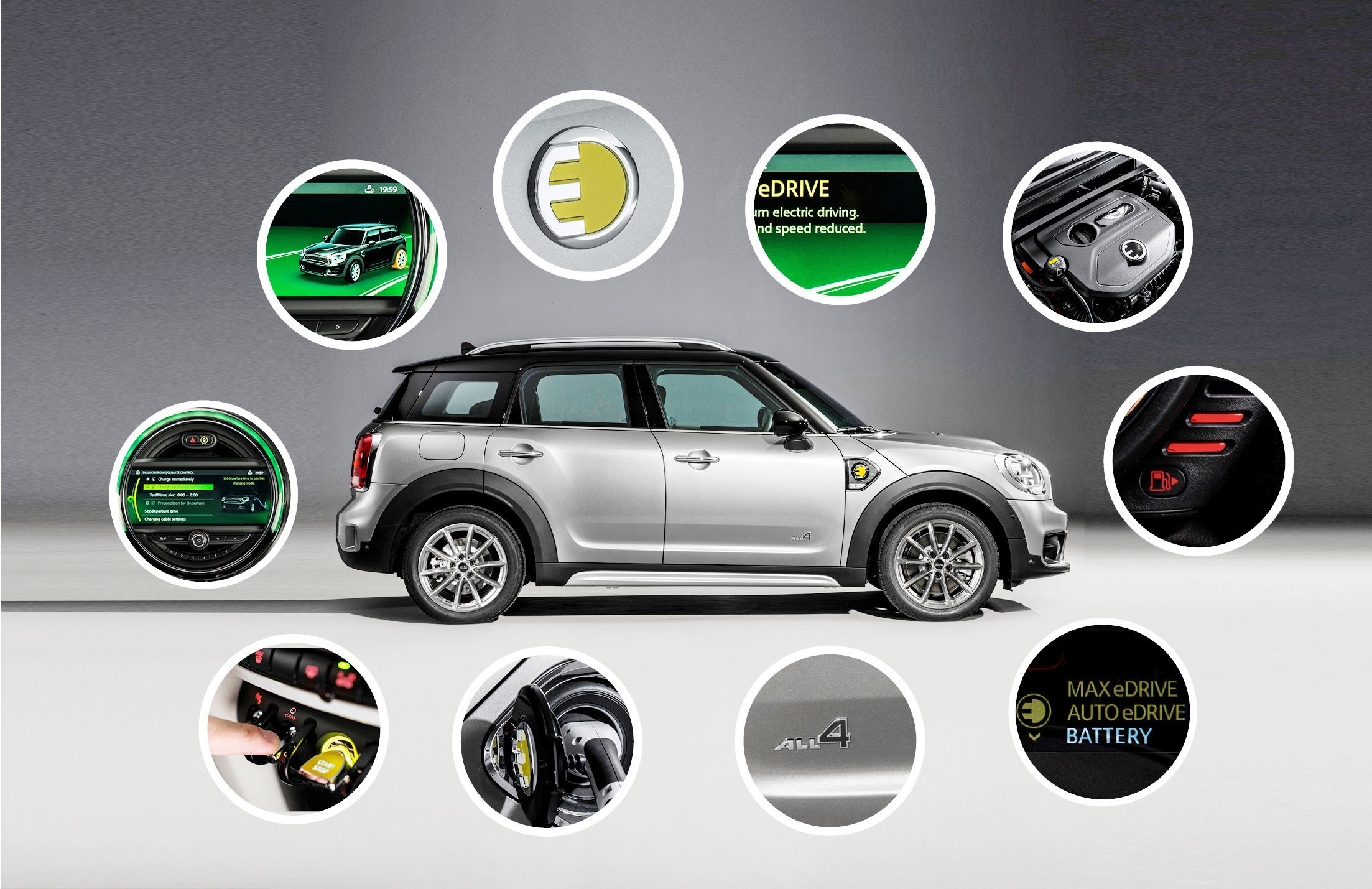Mini first released the Countryman compact five-door crossover in 2010, following it up with a facelift in 2014. Despite vehement opposition from critics and purists who lampooned the model for being too big and too wooly to carry the Mini nameplate, the Countryman ended up being the British brand’s second most popular model, following the Hardtop. Now, there’s a new, second generation, and once again, it’s grown considerably. In fact, the new Countryman is the largest Mini ever produced, but that’s to be expected at this point. The real surprise is the announcement of a new plug-in hybrid variant, which adds electrified motivation to the tried-and-true formula of compact versatility and a fun-loving attitude.
It’s called the Mini Cooper S E Countryman All4, and it’s the first electrified Mini we’ve seen since the Mini E hit the scene in 2008. By contrast, the E was all-electric, helping to guide development of BMW’s i3 all-electric hatchback. The E Countryman is a hybrid, which means it’s still burning dino juice, but at a more efficient rate thanks to a little battery assistance.
Mini frames the E Countryman as “the perfect vehicle for urban target groups who wish to enjoy the benefits of purely electric mobility when commuting between home and work every day, for example, while at the same time benefitting from unlimited long-distance suitability at the weekend.”
The new plug-in sits at the top of the Countryman totem pole as the most efficient, most powerful, quickest, and presumably most expensive model in the line-up. All qualms over sizing aside, does the E Countryman have what it takes to keep rolling in the age of green motoring?
Continue reading to learn more about the Mini Cooper S E Countryman ALL4.
2017 Mini Cooper S E Countryman ALL4
- Make: Array
- Model: 2017 Mini Cooper S E Countryman ALL4
- [do not use] Vehicle Model: Array
Exterior
Let’s start with the dimension increase. The new Countryman is nearly 8 inches longer than before, with a wheelbase that’s extended by nearly 3 inches, and 1.3 inches of extra width.
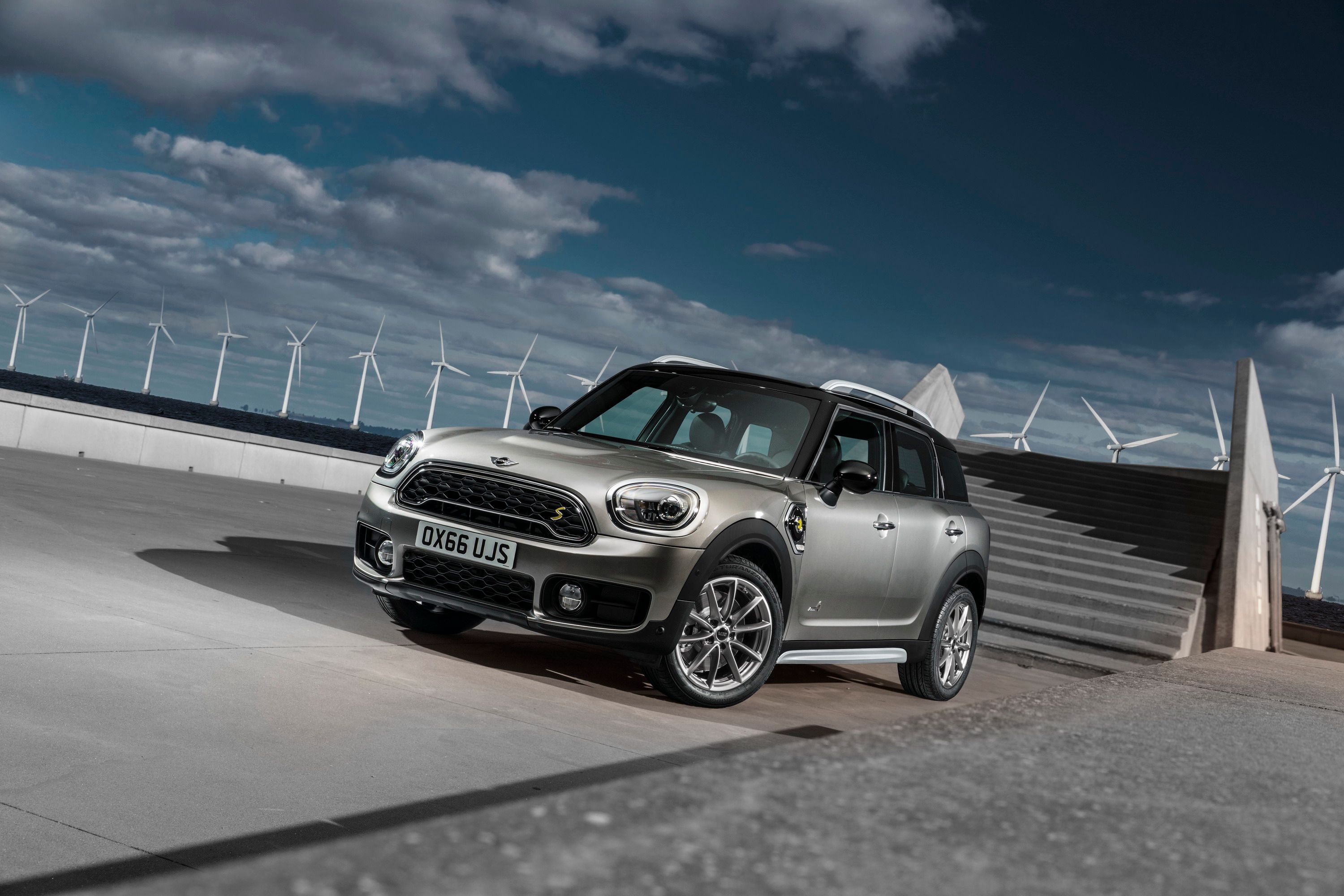
|
Beyond the larger size, there isn’t a whole lot new to point out. The front fascia was reworked a bit, with the headlights now reshaped to offer a more squared-off appearance. The upper grille section is now smaller, and comes with a small upturned divider section that lends the whole thing a bit of frowny face. Below this, we find a tweaked lower bumper with black surrounds for the fog lights.
Moving to the flanks, we find the same tall profile and boxy shape as before. There is matte-black under cladding that runs the length of the car, including up and over the fenders, while metal-look garnish adorns the side sills.
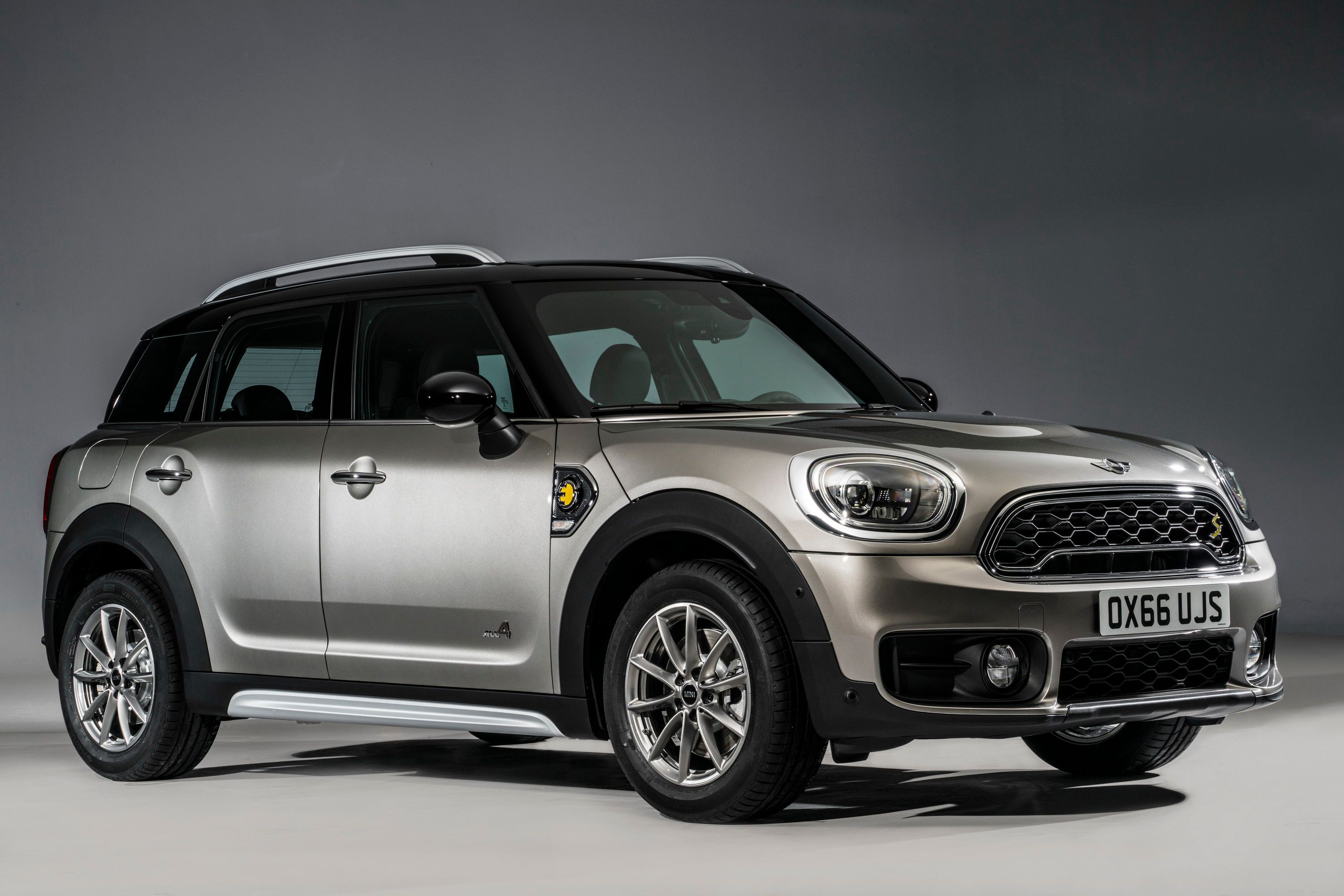
|
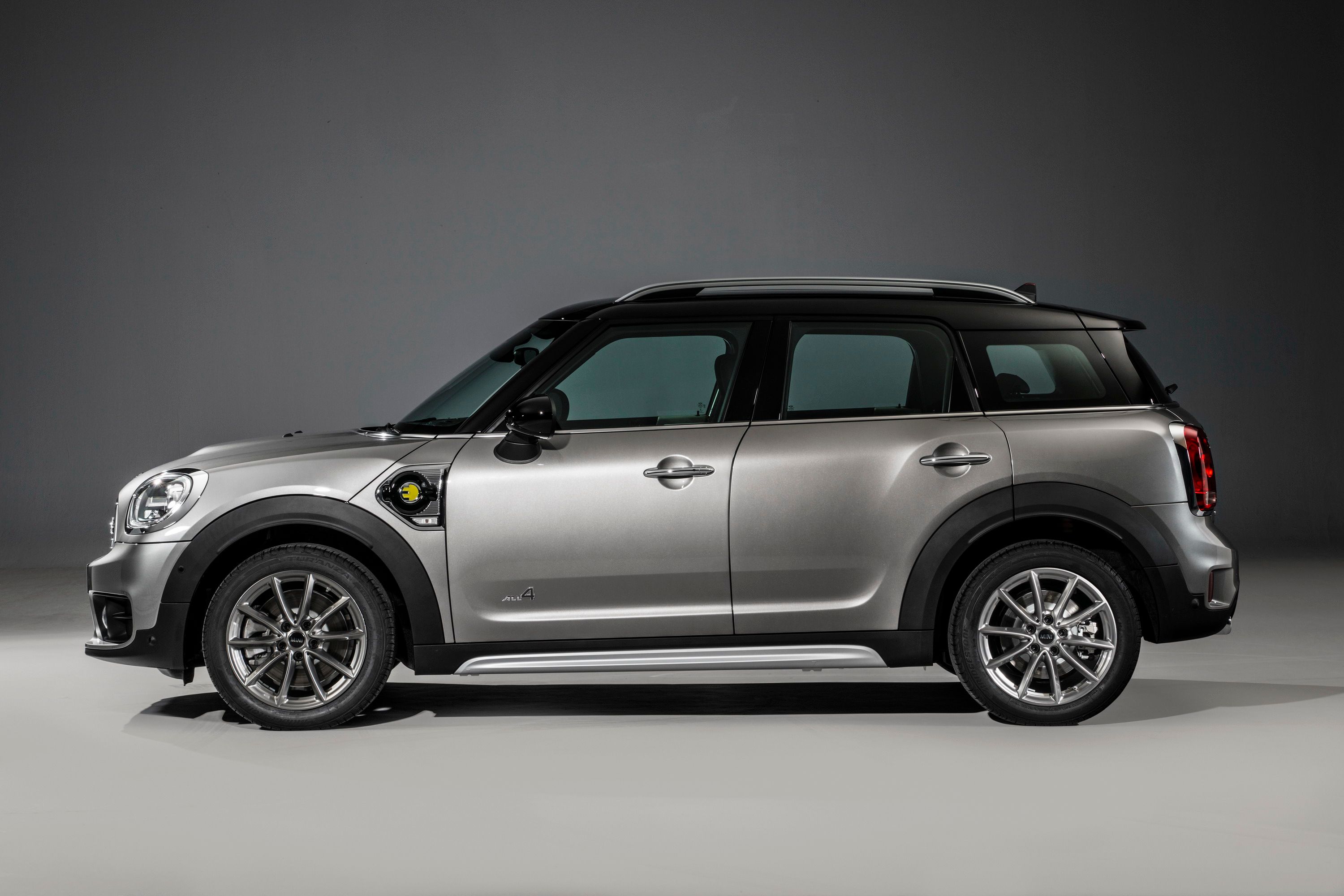
|
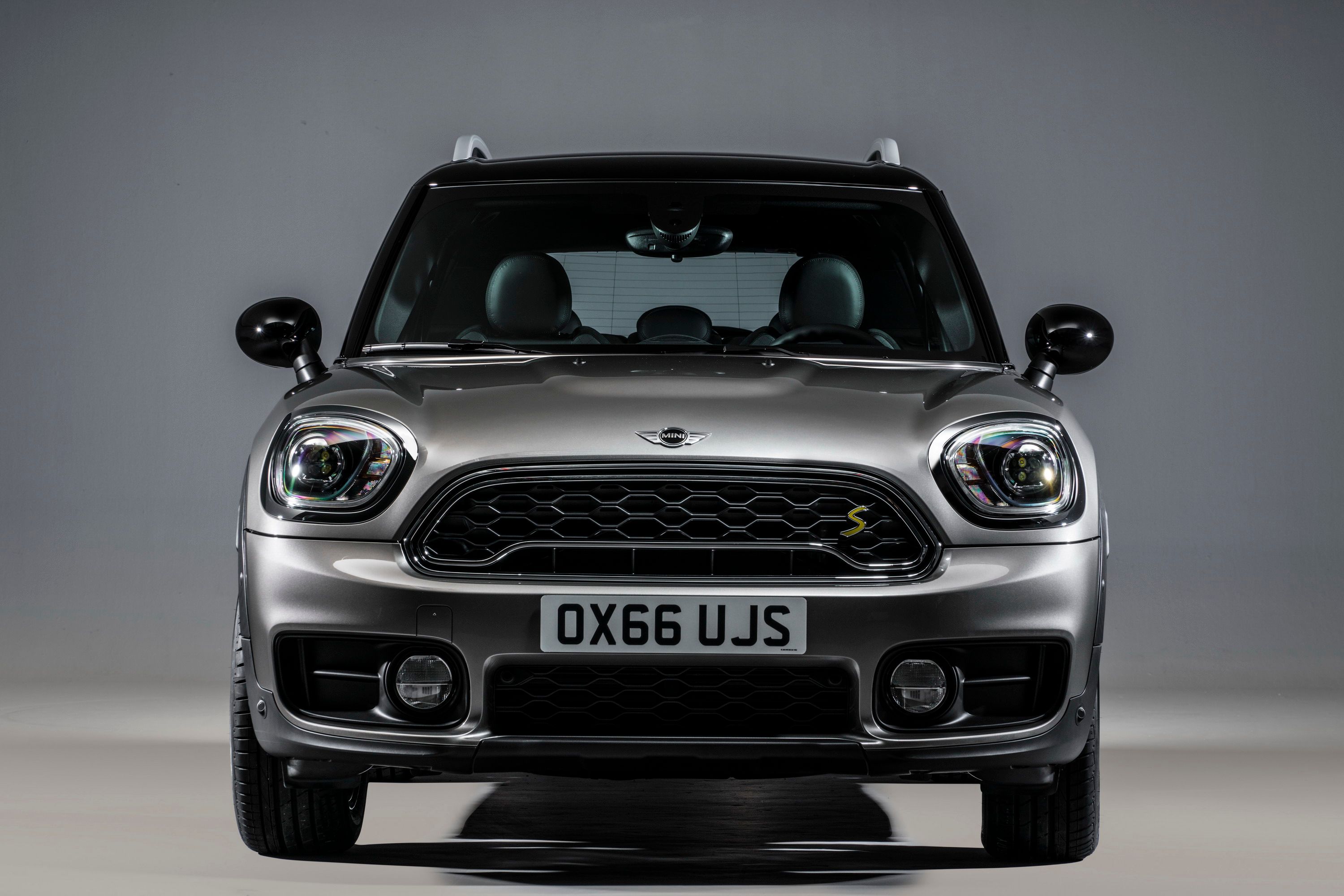
|
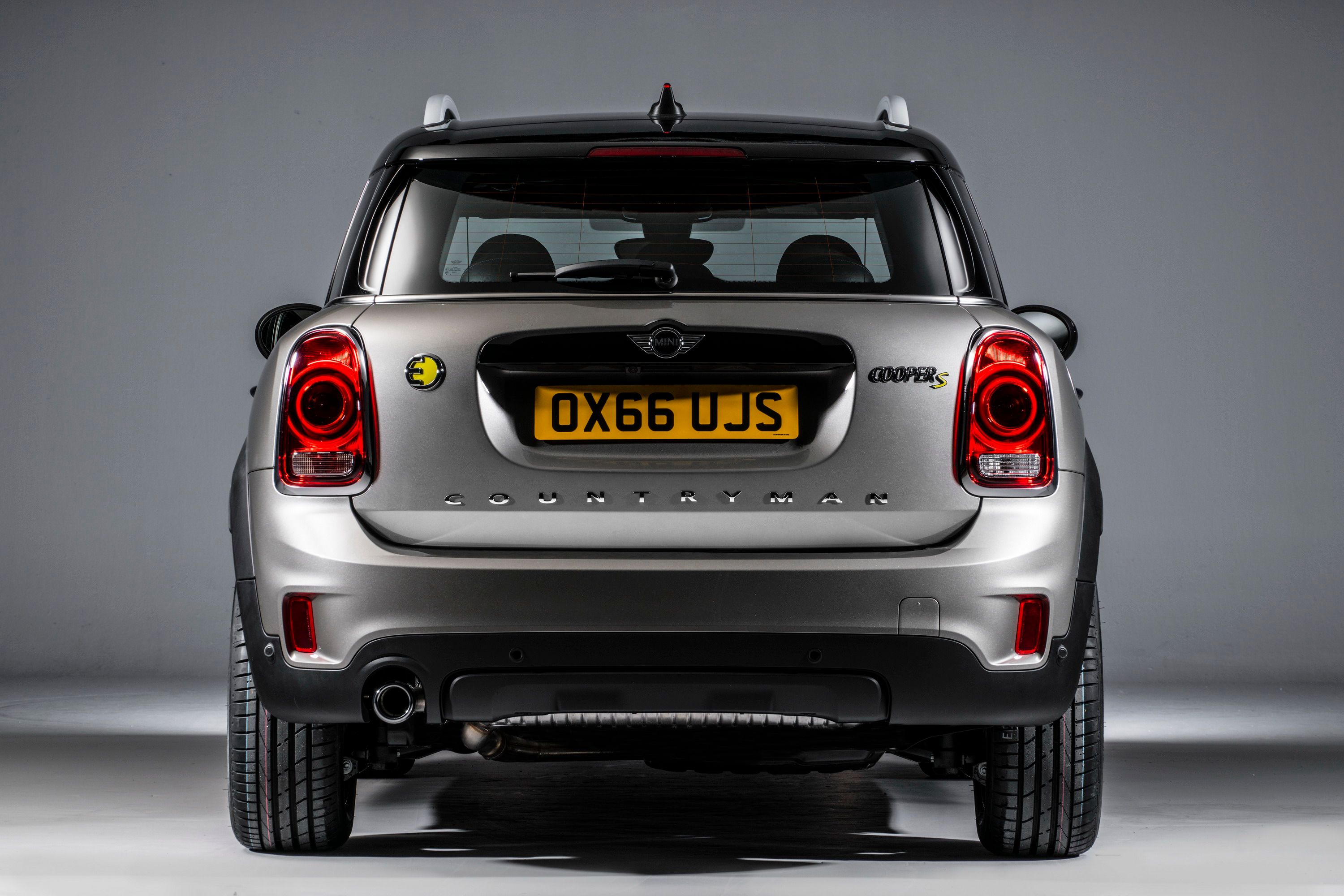
|
In back are new taillights with LED lighting elements, plus the same familiar flat-faced hatch. Chrome makes its appearance here and there, while a black finish and single tailpipe supports it from underneath.
To distinguish the hybrid model from the rest of the lineup, Mini added a few yellow badges to the grille, doors sills, and rear end.
Interior
All that extra metal outside means the interior is now even roomier, with the cabin space considerably expanded for the benefit of the passengers’ comfort. While exact specs on the E Countryman are still forthcoming, the ICE-only model gets an extra two inches of shoulder room, plus nearly four inches of extra legroom for those sitting on the rear bench. Mini claims only a slight reduction in usable space with the hybrid components installed, but we’ll have to wait to see what that entails.
|
Mini Cooper S E Countryman ALL4 |
Nissan Rogue Hybrid |
Toyota Prius C |
|
|
Front Head Room (in) |
TBA |
41.6 |
38.6 |
|
Front Leg Room (in) |
TBA |
43 |
41.7 |
|
Front Shoulder Room (in) |
TBA |
56.6 |
52.3 |
|
Second Head Room (in) |
TBA |
38.5 |
37.0 |
|
Second Leg Room (in) |
TBA |
37.9 |
35.0 |
|
Second Shoulder Room (in) |
TBA |
55.9 |
51.7 |
|
Luggage compartment volume |
15.89 ft3 |
26.7 ft3 |
17.1 ft3 |
Either way, the space that is there should be quite usable, especially when you consider the rear bench gets a 40:20:40 split. The rear bench can also be folded down completely, and it offers a variable tilt angle. We’ll see how this fairs against competitors like the Toyota Prius C and Nissan Rogue Hybrid when the final specs are released.
The overall layout should be somewhat familiar territory, with a funky-looking dash punctuated by a large, rounded center console. The air vents are rectangular and surrounded by chrome, and cool colorized ambient lighting is found throughout.
Unique to the E are hybrid system displays, with info like battery charge state and the operating mode relayed via a 6.5-inch screen nestled in the instrument cluster.
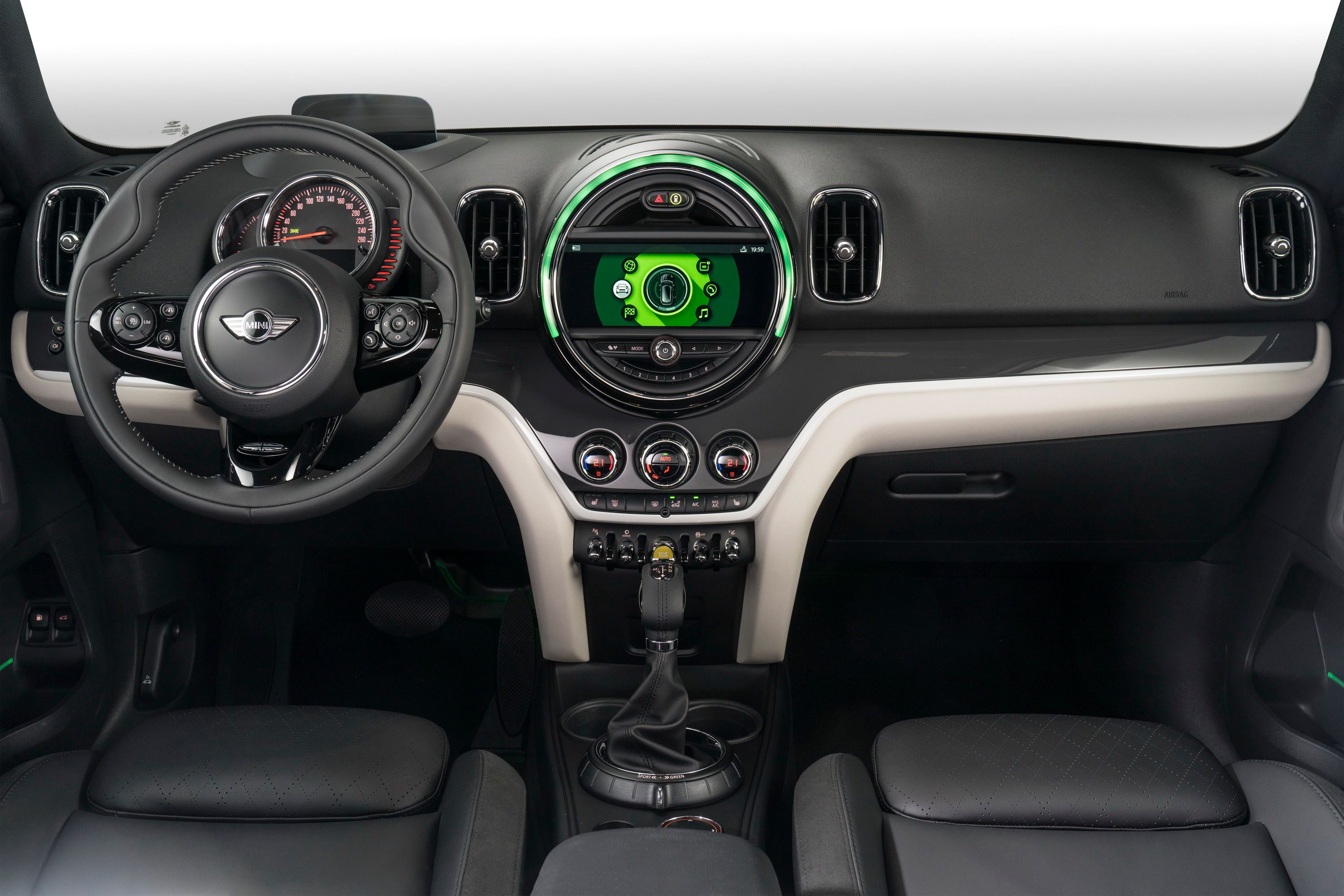
|
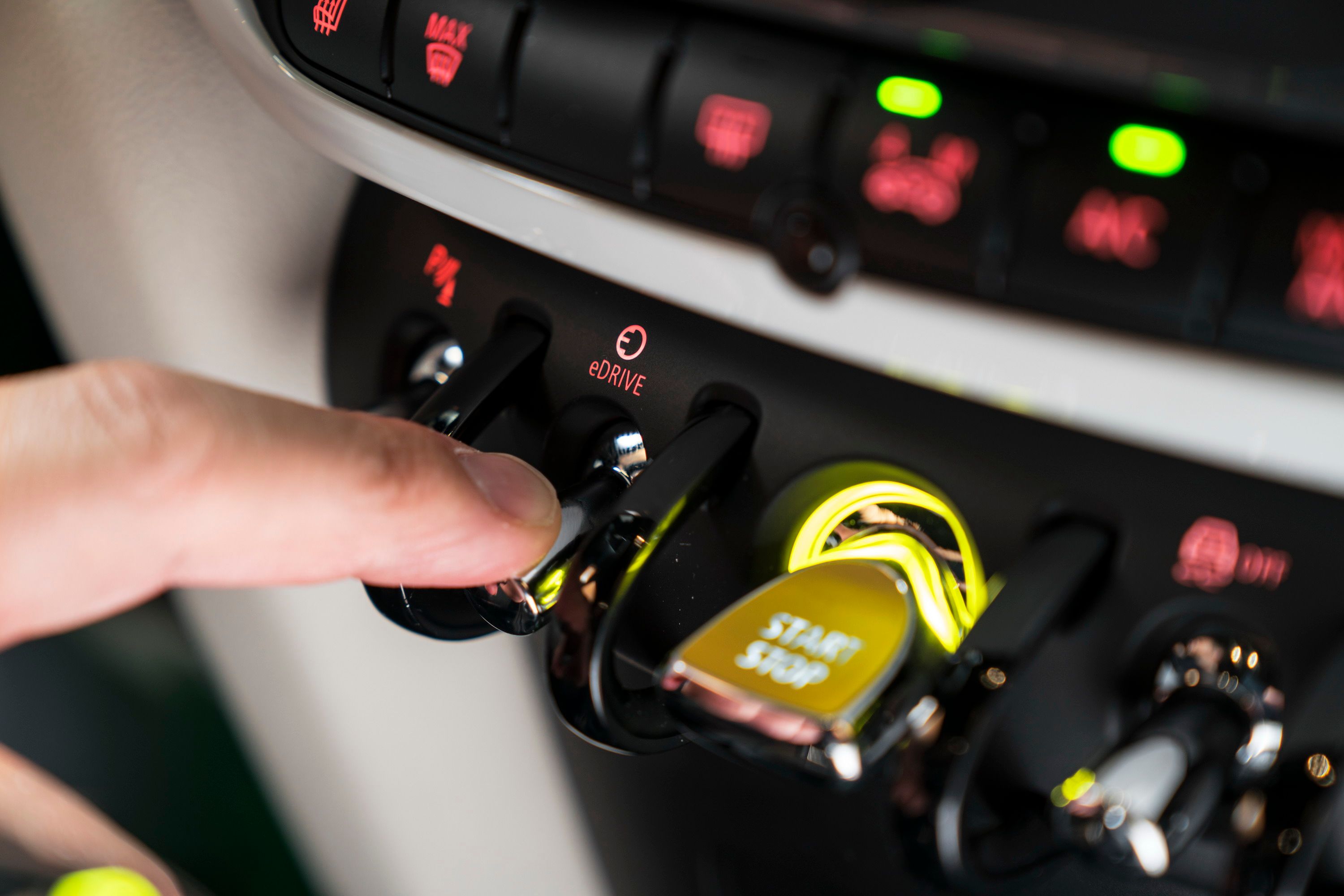
|
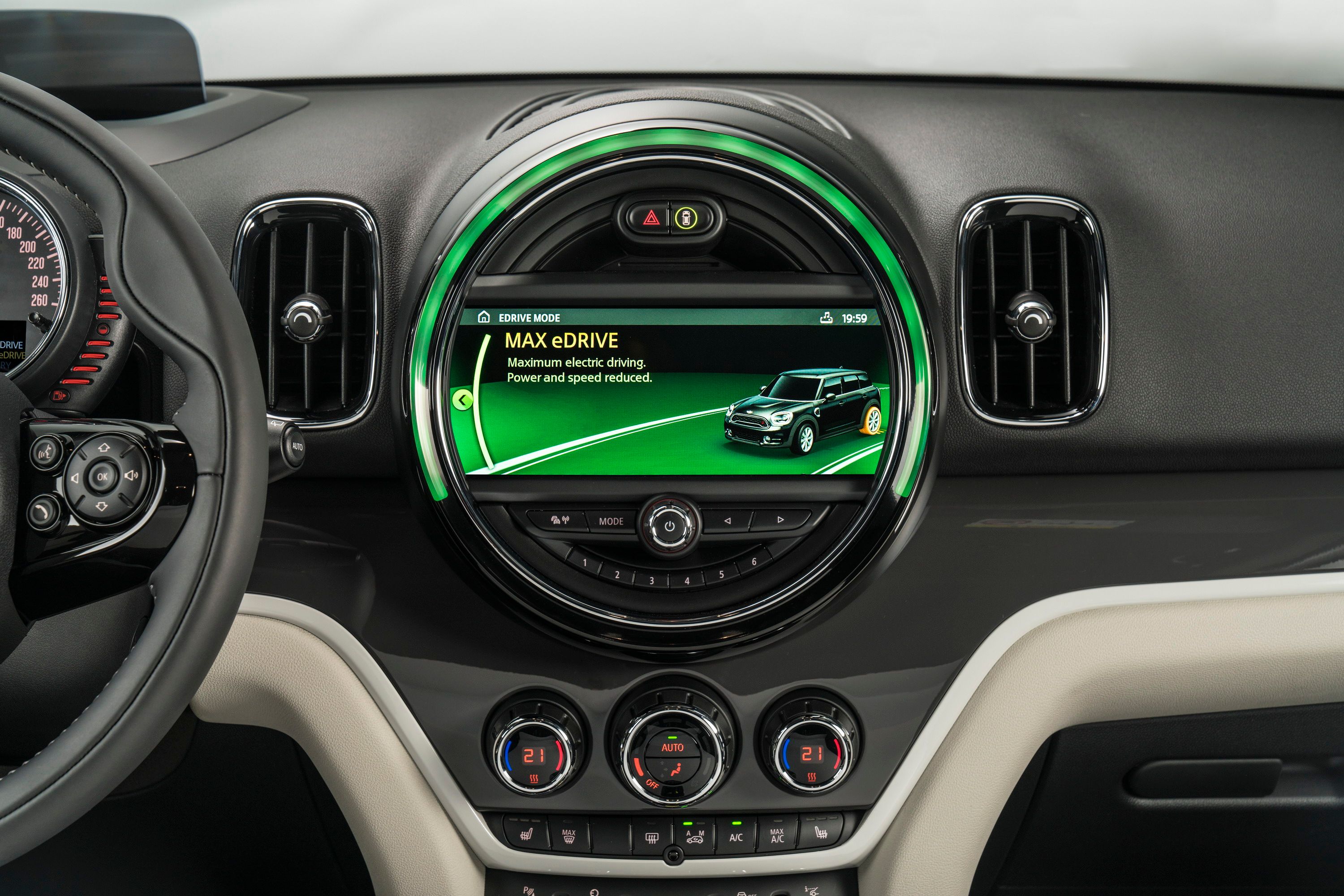
|
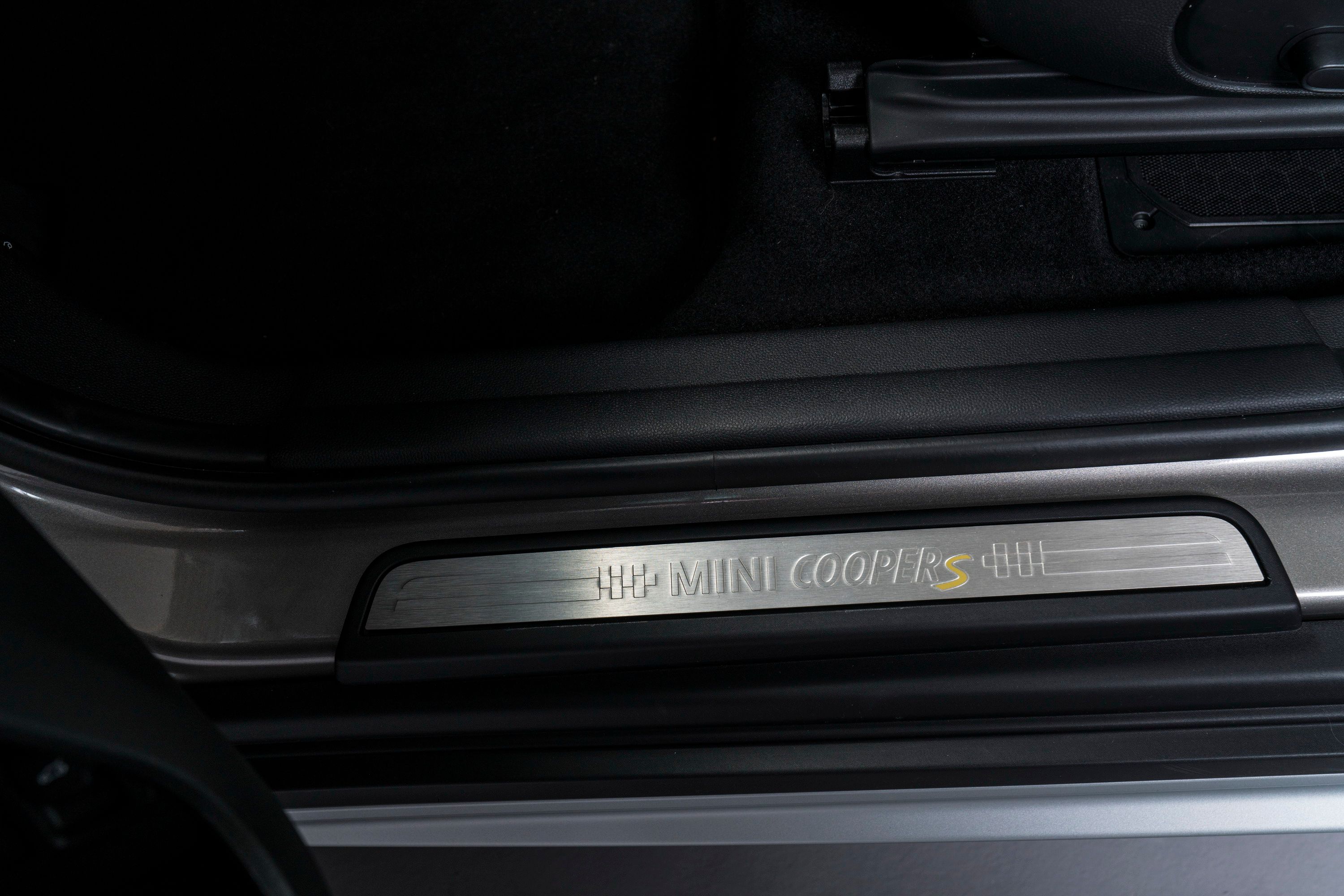
|
Another cool hybrid feature is the efficiency oriented navigation, which will integrate with the energy management system to identify which upcoming sections of the route are best suited for all-electric power, thus maximizing efficiency.
Below the central screen is a yellow start/stop toggle switch, which sits amid several other switches that control the drive modes and various other systems.
As for infotainment, there is standard Radio Mini Visual Boost, plus the Mini Country Timer that lets you know how much time you’ve spent playing off-road. Opt for the Wired package, and you get the Mini navigation system Professional, plus an 8.8-inch screen with a new graphic design and touchscreen function.
Drivetrain
The E Countryman pulls a lot of its powertrain technology from the BMW Group’s eDrive project, which means it takes cues from models like the all-electric i3 hatchback and the hybrid i8 sports car. Believe it or not, the E Countryman actually uses a powertrain that’s similar in principle to Bimmer’s high-tech coupe.
That means it’s got a three-cylinder gasoline engine paired with a synchronous electric motor, but rather than sending the gas power to the rear and the electric power to the front like the i8, the E Countryman switches it around. That said, the end result is still efficiency when you need it and power when you want it, plus a good deal of grip from the electrified intelligent AWD system.
On the dino-juice burning side of things is a turbocharged 1.5-liter three-cylinder mounted in the nose. By itself, the internal combustion engine puts out 136 horsepower and 162 pound-feet of torque, all of which hits the front axle through a modified six-speed Steptronic automatic transmission – the only gearbox option available. Fuel is supplied by a 9.25-gallon tank.
On the electrified flip side is a synchronous hybrid electric motor mounted underneath the floor of the luggage storage area. Peak output for the motor is rated at 88 horsepower and 121 pound-feet of torque, which makes its way to the rear axle through a two-stage single-speed transmission.
Juicing the system is a lithium-ion battery pack mounted ahead of the electric motor and underneath the rear seat, which raises the rear bench slightly and decreases rear headroom. The battery comes with five modules with 16 cells apiece. Capacity is rated at 7.6 kWh. According to Mini, the battery pack takes two hours, 15 minutes to top off when plugged in at a Level 2, 3.6-kW source, or three hours, 15 minutes when plugged in at a regular household socket.
Total combined output of the whole hybrid system is 224 horsepower, which is enough to propel the E Countryman to 60 mph in less than seven seconds, making it the quickest model in the range. It’s also got an all-electric range of about 25 miles at speeds up to 78 mph. Mileage looks like roughly 112 MPGe, while emissions are rated at 49 grams per km using the EU test cycle for plug-in hybrids.
|
Mini Cooper S E Countryman ALL4 |
Nissan Rogue Hybrid |
Toyota Prius C |
|
|
Horsepower |
224 HP |
176 HP |
99 HP |
|
0 to 60 mph |
<7 seconds |
9.5 seconds |
10.5 seconds |
|
All-electric range |
25 miles |
22 miles |
|
|
MPGe |
112 MPGe |
||
|
Emissions |
49 g/km |
The E Countryman tends to favor just one power unit at a time when cruising, calling on both when more power, better traction, higher cornering prowess, or increased stability are needed. Drivers get a say with the eDrive toggle switch, which offers three separate settings – Auto eDrive, which is basically the default setting, Max eDrive, which favors the battery power, and Save Battery, which charges up the electrons for later use.
It kinda makes me wonder what a RWD all-electric Mini would feel like to drive. Hopefully some tuner out there figures out a hack that’ll turn the E Countryman into a battery-sucking drift mobile.
Prices
Look for the 2017 E Countryman to debut next month at the Los Angeles Auto Show. Following up on the reveal will be dealership deliveries sometime next June, with exact pricing announced somewhere in between.
For now, though, we’re guessing this thing will start at about $27,000.
Competition
Nissan Rogue Hybrid
The Rogue is one of Nissan’s most successful models, and now, there’s a hybrid variant to broaden the crossover’s appeal even further. Both FWD and AWD are offered, with up to 176 horsepower for the upper trim levels. If space is a big concern, this may be the one to get.
Read the full review here.
Toyota Prius C
While more of a hatchback than a crossover, the Prius C offers endlessly practical motoring on all fronts. It’s efficient, comes with lots of cargo room, and is relatively inexpensive to buy too. Just don’t expect it to be a whole lot of fun.
Read the full review here.
Conclusion
Okay, so the new Countryman is bigger. Prepare yourself – I think it’s actually a good thing, at least as far as the hybrid model goes. The extra size makes total sense, considering you need the space to equip the electric motor drive and battery.
Yes, it’s not very Mini-esque, and yes, a hybrid crossover is pretty much a direct contradiction of the original Mini philosophy. But if you put all that to one side, this vehicle looks like it should do quite well. People still love crossovers, and with electrification added to the same ‘ole neo-Mini recipe, the sales should keep on rolling just fine.

